#its set in 1880s san francisco
Explore tagged Tumblr posts
Text
Im so obsessed with this historical au I can't wait to finish it and share it because I—

#its got catholic guilt#its got body worship#its got cultural appreciation#its got dancing and cute domestic moments#i just *chefs kiss*#its so beautiful#(its also kinda sad but shhhhhh)#its set in 1880s san francisco#with working class immigrants chow and finn#and finn is irish catholic and its just so 🤌🤌🤌#jackie chan adventures#fanfiction#jca#jca fanfiction#jca finn#jca chow#jca finn x chow#finn x chow#historical au
4 notes
·
View notes
Text
was thinking about this

To be in "public", you must be a consumer or a laborer.
About control of peoples' movement in space/place. Since the beginning.
"Vagrancy" of 1830s-onward Britain, people criminalized for being outside without being a laborer.
Breaking laws resulted in being sentenced to coerced debtor/convict labor. Coinciding with the 1830-ish climax of the Industrial Revolution and the land enclosure acts (factory labor, poverty, etc., increase), the Metropolitan Police Act of 1829 establishes full-time police institution(s) in London. The "Workhouse Act" aka "Poor Law Amendment Act of 1834" forced poor people to work for a minimum number of hours every day. The Irish Constabulary of 1837 sets up a national policing force and the County Police Act of 1839 allows justices of the peace across England to establish policing institutions in their counties (New York City gets a police department in 1844). The major expansion of the "Vagrancy Act" of 1838 made "joblessness" a crime and enhanced its punishment. (Coincidentally, the law's date of royal assent was 27 July 1838, just 5 days before the British government was scheduled to allow fuller emancipation of its technical legal abolition of slavery in the British Caribbean on 1 August 1838.)
---
"Vagrancy" of 1860s-onward United States, people criminalized for being outside while Black.
Widespread emancipation after slavery abolition in 1865 rapidly followed by the outlawing of loitering which de facto outlawed existing as Black in public. Inability to afford fines results in being sentenced to forced labor by working on chain gangs or prisons farms, some built atop plantations.
---
"Vagrancy" of 1870s-onward across empires, people criminalized for being outside while being "foreign" and also being poor generally.
Especially from 1880-ish to 1918-ish, this was an age of widespread mass movement of peoples due to the land dispossession, poverty, and famine induced by global colonial extraction and "market expansion" (Scramble for Africa, US "American West", nation-building, conquering "frontiers"), as agricultural "revolutions" of imperial monoculture cash crop extraction resulted in ecological degradation, and as major imperial infrastructure building projects required a lot of vulnerable "mobile" labor. This coincides with and is facilitated by new railroad networks and telegraphs, leading to imperial implementation or expansion of identity documents, strict work contracts, passports, immigration surveillance, and border checkpoints.
All of this in just a few short years: In 1877, British administrators in India develop what would become the Henry Classification System of taking and keeping fingerprints for use in binding colonial Indians to legal contracts. That same year during the 1877 Great Railroad Strike, and in response to white anxiety about Black residents coming to the city during Great Migration, Chicago's policing institutions exponentially expand surveillance and pioneer "intelligence card" registers for tracking labor union organizing and Black movement, as Chicago's experiments become adopted by US military and expanded nationwide, later used by US forces monitoring dissent in colonial Philippines and Cuba. Japan based its 1880 Penal Code anti-vagrancy statutes on French models, and introduced "koseki" register to track poor/vagrant domestic citizens as Tokyo's Governor Matsuda segregates classes, and the nation introduces "modern police forces". In 1882, the United States passes the Chinese Exclusion Act. In 1884, the Ottoman government enacts major "Passport Nizamnamesi" legislation requiring passports. In 1885, the racist expulsion of the "Tacoma riot".
Punished for being Algerian in France. Punished for being Chinese in San Francisco. Punished for being Korean in Japan. Punished for crossing Ottoman borders without correct paperwork. Arrested for whatever, then sent to do convict labor. A poor person in the Punjab, starving during a catastrophic famine, might be coerced into a work contract by British authorities. They will have to travel, shipped off to build a railroad. But now they have to work. Now they are bound. They will be punished for being Punjabi and trying to walk away from Britain's tea plantations in Assam or Britain's rubber plantations in Malaya.
Mobility and confinement, the empire manipulates each.
---
"Vagrancy" amidst all of this, people also criminalized for being outside while "unsightly" and merely even superficially appearing to be poor. San Francisco introduced the notorious "ugly law" in 1867, making it illegal for "any person, who is diseased, maimed, mutilated or deformed in any way, so as to be an unsightly or disgusting object, to expose himself or herself to public view". Today, if you walk into a building looking a little "weird" (poor, Black, ill, disabled, etc.), you are given seething spiteful glares and asked to leave. De facto criminalized for simply going for a stroll without downloading the coffee shop's exclusive menu app.
Too ill, too poor, too exhausted, too indebted to move, you are trapped. Physical barriers (borders), legal barriers (identity documents), financial barriers (debt). "Vagrancy" everywhere in the United States, a combination of all of the above. "Vagrancy" since at least early nineteenth century Europe. About the control of movement through and access to space/place. Concretizing and weaponizing caste, corralling people, anchoring them in place, extracting their wealth and labor.
You are permitted to exist only as a paying customer or an employee.
#get to work or else you will be put to work#sorry#intimacies of four continents#tidalectics#abolition
3K notes
·
View notes
Text
While I was pondering whether Mrs. Douglas had a "freeze" reaction to trauma in chapter V of The Valley of Fear, chapter VI appeared with the answer, and I fear Letters from Watson will soon provide chapter VII, so let's get cracking.
There are three things top of mind for me today:
The Panic of 1873
Yews
Dumbbells
The Panic of 1873
When I worked out the timeline for Cecil Barker's recounting of "we did this for five years and this for one year," etc., etc., assuming that the story takes place in late 1888 or early 1889, the year I got for Barker's likely arrival in the U.S. was 1873.
That's significant: he set off to make his fortune, ending up in the gold fields of California, about the time that a global depression was starting.
The short version of the Panic of 1873 is that after the Civil War, U.S. railroad bonds (that is, the debt used to finance railroad construction) were the hot investment, not just in the US, but in Europe, especially Germany. Nineteenth-century investing was mostly in bonds -- this is why people talk in Victorian novels about having investments in 3-percents that pay 10,000 pounds a year, or similar. When you invested your money, the company was literally in debt to you, and it paid you a safe "coupon" of interest on that debt.
Not all bonds were the same. People were "ruined" by investing in companies that did not have stable cash flow or were outright fraudulent.
The initial problem in 1873 was not with the railroads, though, but with trading in the bonds. When German investors moved on to other investments, there were too many railroad bonds running loose, causing their value to plummet. That took out a US bank that had a hefty investment in those bonds, as their asset value dropped. The bank failure caused a panic, which cascaded through the system. This article and this one explain some of the specifics.
Anyway, Cecil Barker seeks his fortune abroad at a time loosely equivalent to the Great Recession of 2008.
In 1873, California was wrapping up efforts to exterminate native peoples -- no, I'm not exaggerating. This was not covered in 4th grade state history, 5th grade U.S. history, nor 8th or 11th grade U.S. history when I was in school!
By 1873, Gold Rush hysteria was over and some of the original sites in the Sierra Nevada foothills had been largely mined-out and abandoned, though mining still continued where it could. San Francisco was establishing itself as "the Paris of the West." The Central Valley, where I live, was getting rail built down its length, with towns established at various points for taking on fuel and water, as well as for picking up wheat and other crops that didn't require intensive irrigation (which wouldn't arrive for ~40 years).
It's not me, it's YEW
After decades of reading British novels, I have finally looked up what a yew is. I'd always envisioned something like the Chinese juniper that's planted everywhere around here: a low, dense hedge with soft packets of needles and a pungent, dusty scent.
Nope. I far underestimated the yew. It is a tree that makes Tolkien's Ents look small and non-threatening. Visit this yew-focused page to see the most terrifying trees. The existence of the yew also explains folktales of the British Isles where fair folk live in hollow trees. Yikes.
The yew traditionally symbolizes death, so the yew hedge is an excellent place to hang out after one's husband is mysteriously murdered.
(While you're there, the Ancient Tree Inventory is great for hours of exploration and arboreal terror.)
Where is the missing dumbbell?
The fact that Douglas has dumbbells at all is interesting, as the physical culture movement only really took off in the US in the 1880s, and it was slower to arise in England due to a greater cultural emphasis on "games."
He may have been influenced by his German first wife, as it was German immigrants in the 1850s who popularized the "Turner" movement of liberal political philosophy and physical fitness, the latter through vigorous gymnastics. Turnverein had a significant role in bringing PE into American schools.
Depending how one interprets the dumbbells, Douglas could be:
Forward-thinking
Eccentric
Worried about physical attacks or about aging
Very into German culture
We can't ask Mrs. Douglas, as, per Cecil Barker, Douglas' "perfect" trust in her did not include telling her... oh, anything actually important about his life.
I really want to know who was using whom in this household.
15 notes
·
View notes
Text
To B With Love: The One With The Honey Moon
I had a lot of fun learning about 19th century San Francisco and thought folks might like to see where Steve & Billy spend their bonding retreat.
If that interests you at all, more beneath the cut.

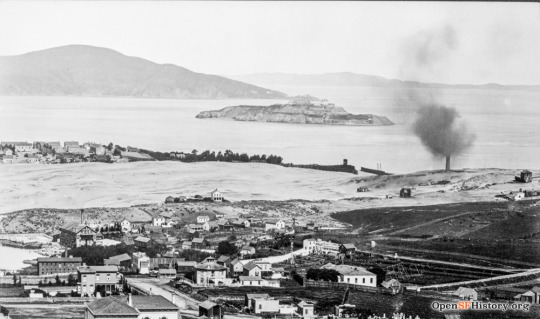
(Cow Hollow 1870)
Bordering the marina district on the bay, Cow Hollow is still a neighborhood that exists in the city today, and parts of it can be seen in The Princess Diaries, which is irrelevant but dear to me.
When the first settlers arrived with the gold rush it was called Spring Valley, known for the numerous freshwater springs that fed into the fertile lagoon, as well as for grassy meadows and sand hills inhabited by wildlife. All those grassy meadows were great for farming, and the area came to be known as Cow Hollow after its many immigrants took to lucrative dairy farming. The price of milk was high in the city at that time and a local farmer could easily support a family on dairy production.
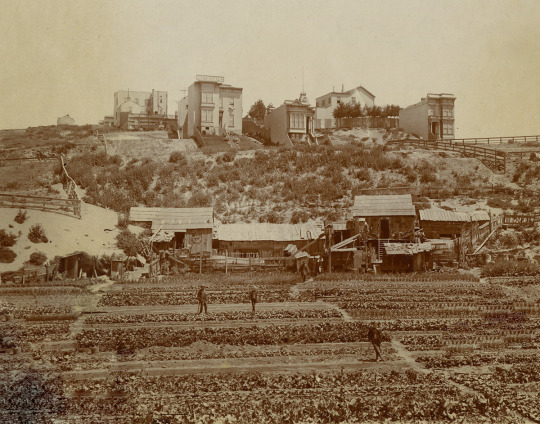
Cow Hollow (Chinese vegetable farm 1883)
Its main thoroughfare, was until the early 20th century an unpaved road which linked the developing city with the Presidio. As San Francisco rapidly expanded the area prospered and became a fashionable district for Prominent San Franciscans. They came and built their fancy houses and shops and businesses followed them. From about the 1860s to the late 1870s there were your standard gentrification tensions between the farmers and the fashionable set, which ended when the city banned cows in the area in the 1880s, effectively ending farming in the area for good.

Cow Hollow (The Attorney General's private estate ensconced by trees)
Perhaps in defiance people continued to call it Cow Hollow, and good on them for that.
This neighborhood makes a lot of sense to me as a place Steve's cousin would have picked to hide him, as it is "comfortable", but not as congested as the city proper as well as close to the bay if a quick retreat is needed by boat.
*Bonus view of the Golden Gate strait from the Crissy field shoreline 1870
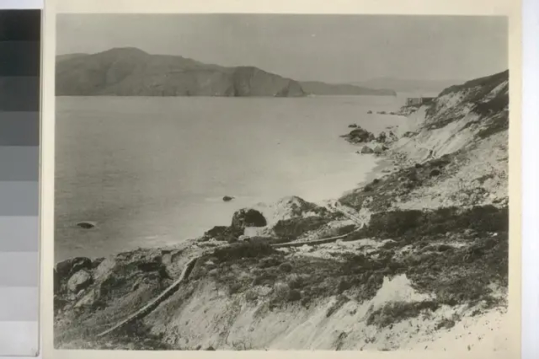
The same view in 2015
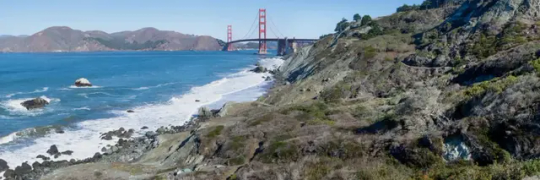
The house Billy & Steve stay in is described as an octagon shaped cottage, with a cross gabled roof and wrap around porch. Octagon shaped houses were a hot fad for "forward thinking individuals" in the 19th century that started with this doctor who published a bunch of papers, detailing his research into the human body and how the enlightened individual could use their environment to live their best life. Apparently, the flow and function of the octagon shape was superior in his book. Anyway, thanks to him and the trend setters we now have a nice collection of historical houses with this quirky, not all that functional shape. There's a full list online but I'll just include a few that were built around the 1860s
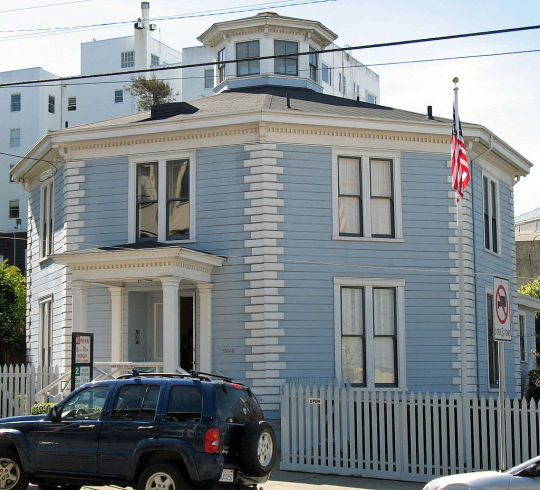
(McElroy House - San Francisco)
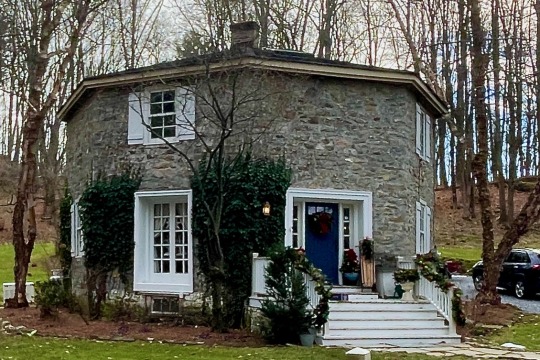
(New Jersey: super cute but I can imagine the tiny, weirdly cornered rooms just by looking at it)
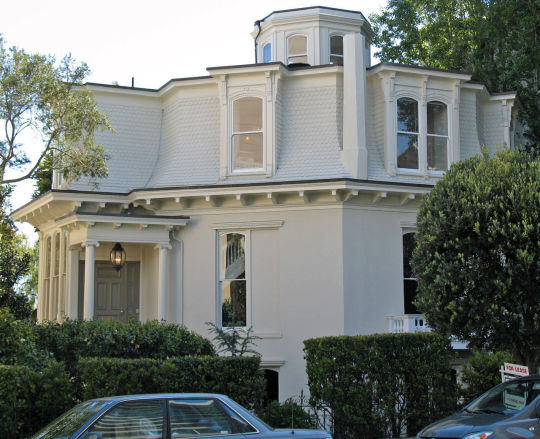
(San Francisco: some modern updates obviously but I love the roof work)
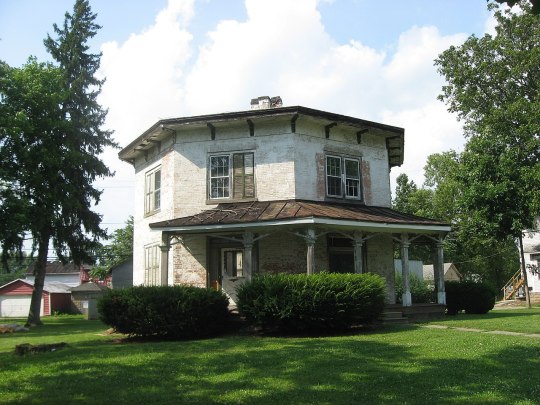


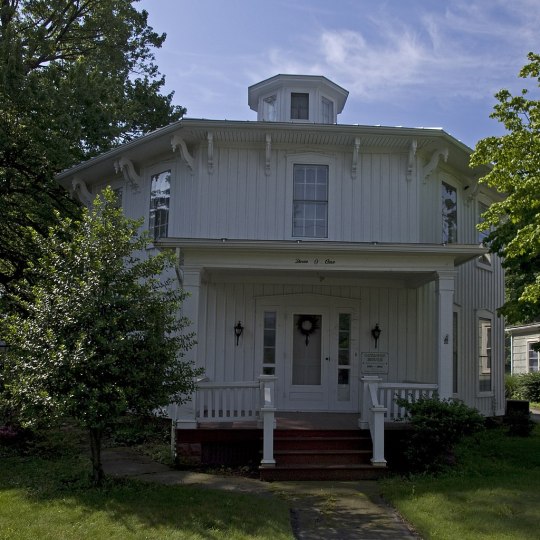
(Not sure where these are)
And the one I used a direct reference for Steve & Billy's little retreat.

I love the gables, the porch, just everything. I can picture it on a hill with a view down to the bay, and I loved the idea of them being able to just follow a road to the sea.
That was the first image that came to my mind when I was outlining - the boys hand in hand on their way to the beach. Disheveled, not quite 'done up' all the way but no one to see them if they did. Just being young and starry eyed for each other. Frankly they deserve it after all I put them through lol.
#harringrove#billy hargrove#steve harrington#fic related things#to b with love#visual post#the honey moon spot
26 notes
·
View notes
Text

Fresno Chinatown, c. 1880. Photographer unknown.
The Armed Chinatown of Fresno
For this short roadtrip away from San Francisco, this brief paragraph from the Stockton Independent newspaper of September 15, 1879, mentioning “guns, pistols and daggers” illustrates the seriousness with which early Chinese Americans in Fresno, California, and other rural Chinatowns addressed external threats to their lives and livelihoods. This included threats from the then-surging Workingmen’s Party, led by notorious demagogue, xenophobe and racist agitator Denis Kearney.

from the "Valley Items" column published in the Stockton Independent newspaper of September 15, 1879.
In the 1870s Kearney began denouncing Chinese immigrants as the cause of white workers’ economic woes. By 1878, he frequently gave violent speeches against Chinese at San Francisco’s Sandlot forum, blaming them for white labor problems. His movement propelled his party to the 1879 California Constitutional Convention where various anti-Chinese laws, including a ban on employing Chinese laborers, were enacted. Kearney also took credit for nationalizing the debate over Chinese immigration to the US, culminating in the Chinese Exclusion Act of 1882.

Dennis Kearney (1847-1907), Irish-American political leader, influential in the passing of the Chinese Exclusion Act of 1882.
As recounted in more detail by author Jean Pfaelzer in her book, Driven Out: The Forgotten War Against Chinese Americans, (pub. Random House) rural Chinatowns throughout California became targets of economic boycotts and vigilante violence. Fresno’s Chinatown, established during the construction of railroad lines after the Transcontinental Railroad’s completion in 1869, was not immune from persecution by white agitators. Despite it’s the residents arming themselves, possibly for deterrence, the community faced vigilante violence in the next decade.
The Chinese Exclusion Act in 1882 did little to calm rural California and its unemployed white workers. In 1886, an anti-Chinese economic boycott movement began in Truckee. Fresno’s local anti-Chinese club set up a whites-only employment office, attracting four hundred men. However, during the early spring planting season near Fresno, vineyard and fruit growers in the Fresno area rejected the boycott, stating that it was “absolutely impossible” to obtain white labor. The troubles in Fresno represented a symptom of the violence and roundup of Chinese Americans throughout California during the latter half of the 19th century, when Chinese were literally driven out rural areas to concentrate in the state’s cities, particularly San Francisco.

A map showing more than 200 incidents of rounding up Chinese in California for expulsions during 1849 to 1906.
Rather than calm the hostility by whites against Chinese, the congressional enactments of the 1882 Act and its 10-year extension, the Geary Act of 1892, seemed to foment more anti-Chinese boycotts, violence, and expulsions.
In Fresno, anti-Chinese violence peaked in the summer of 1893, when deliberately-set fires in Fresno destroyed several mills and packinghouses, not all of which employed Chinese workers. White workers demanded that merchants fire their Chinese workers. Fearing the mob, several packinghouse and vineyard owners complied and fired their Chinese workers. Many Chinese field-workers sought protection in Fresno’s Chinatown, which continued to provide refuge from mob violence.

Detail from Fresno Chinatown's main street, c. 1880.
On August 15, rioters invaded vineyards near Fresno, and another white mob raided the Fracher Creek Nursery, capturing Chinese workers, stealing their money and belongings, and bludgeoning one man to death. The mob marched the Chinese nursery workers toward Fresno in the valley heat until the sheriff intervened and released them. That same week, Chinese packers at the nearby Earl Fruit Company were forced onto a train to Fresno and given five days to leave the county. Gangs forced more Chinese men out of local vineyards and destroyed their tent camps. Hundreds of unemployed white workers and vagrants milled around Fresno’s streets, watching the Chinese depart. The roundups and expulsions of Chinese workers did not solve the massive unemployment crisis. Even after the purges, few jobs were available for whites. Hunger exacerbated the riots. By late August, Fresno’s Presbyterian church was providing eight hundred meals nightly to white men, some of whom had not eaten for days. The city council’s plan to give meal tickets to “idle men” for cleaning alleys failed due to a lack of funds.
The roundups and expulsions of Chinese did not solve the crisis of massive unemployment. Even after the purges, there were few jobs for whites. Hunger exacerbated the riots. Toward the end of August, Fresno’s Presbyterian church was nightly providing eight hundred meals to white men, some of whom had not eaten for days. The city council’s plan to give meal tickets to “idle men” for cleaning alleys failed when it ran out of money. The supervisors moved some of the “tramps and ruffians” out of town by forming them into chain gangs to clear roads or do field work.

The temple in old Fresno Chinatown, c. 1880. This detail from a larger photo appears to depict the Chee Kung Tong temple at 939 G Street, which was built in the early 1880's with contributions from the tong. The temple housed a wooden altar reportedly carved in 1869 in China. The two-story brick structure contained a meeting hall on the first floor. Lodgings wer located next door. The joss house was closed to the public in 1936 and later used by the Chinese Consolidated Benevolent Society. The structure no longer exists.
The purge of Chinese workers from California’s fields, citrus groves, and orchards worsened the economic situation. Fresno’s labor bureau had over six hundred men seeking work, but farmers and nurserymen knew their crops would perish if unskilled laborers replaced the skilled Chinese workers, such as fruit tree "budders." Banks closed, and local stores went out of business.

Roundups of Chinese residents continued into the following year, often with judicial sanction. In May 1894, the Del Rio Rey Vineyard in Fresno replaced its white employees with Chinese workers. Within days, dynamite bombs were found under the bunkhouses. The new Chinese workers fled in response to the terrorism, but no arrests were made. Today’s diaspora communities across the US could learn from these pioneers who, contrary to passive stereotypes, were prepared to protect themselves by any means necessary. This was just one small railroad Chinatown arming itself in difficult times.

New Year's celebration and parade in Fresno, California, c. 1900. Some researchers have speculated that the dragon shown in this photo was the well-known Marysville Chinatown dragon which appeared all over California during this period.
Lessons from these small Chinatowns of the past regain relevance today. Asian American communities should recommit to self-defense where local governments fail to provide basic public safety.
4 notes
·
View notes
Text
[Image description: a thread by user Crémieux @ cremieuxrecueil, transcribed below.
Why is San Francisco so incredibly gay? Military policy.
[photo of a streetcar decorated for Pride.]
In 1982, Randy Shilts published his biography of Harvey Milk, entitled "The Mayor of Castro Street". For those who don't know, Harvey Milk was the first open homosexual to be voted into public office in the state of California. He was on the San Francisco Board of Supervisors.
[picture of the book cover]
The biography contains a fair bit of background, not just about Harvey Milk, but about San Francisco's gay community more generally.
In its early years, San Francisco attracted large waves of mainly male migrants motivated by the promise of gold in California.
[stamp with the text "California gold rush 1849" and a picture of four men panning for gold]
Boys will be boys, and out of necessity and selectivity, these early migrants tended to be a bit more accepting of homosexuality than the people back east. The gays among them enjoyed more license, attracting more gays, many of whom abided by the handkerchief code.
[photo of someone's back pockets covered in handkerchiefs of various colours]
As San Francisco grew from backwater to a bustling city of some 50,000, its licentious attitudes led to gays migrating there just to be around more gays. This reputation was so renowned that even Oscar Wilde talked about it:
[quote.] The scandal sheets of a more Victorian America fretted about the city's unnatural vices in the 1880s. In England, Oscar Wilde noted, "It's an odd thing, but anyone who disappears is said to be last seen in San Francisco," an observation that undoubtedly said as much about Wilde's company as it did about the city's magnetism. [end quote]
The Spanish-American War saw thousands of young men come to call the city home, and many of these young men learned that they could make extra money escorting older men.
[painting of a battlefield]
But the bustling gay scene wouldn't last.
In 1906, the earthquake destroyed 80% of the city, including most of the underground gay establishments. It also attracted church leaders who ran clean-up campaigns that were followed by even more extreme efforts during Prohibition.
[photo of men pouring liquid into a sewer]
The campaigns against gay establishments and establishments that accepted them due to their 'looser morals' were coupled with private efforts to blackmail gay men.
Some navy men would dress up in their tightest uniforms and stake out Market Street, hoping to find gays to extort.
[quote] survived. Resourceful gays staked out Market Street, the city's main thoroughfare, as a cruising zone and there shopped among the always numerous sailors for satisfaction. Dangers abounded. Some plucky navy men would dress in their tightest blues and memorize license numbers of cars that sputtered slowly by. From motor vehicle records, the voter registrar, or the city directory, the military men could trace the cruiser's address. Before the week was out, many a hapless victim would receive an extortionist's invoice, casually mentioning that if payment were not promptly received, both family and employer could expect revealing mail. [end quote]
If that weren't enough, the "Lilly Laws" enforced by the police made things much worse. One method the police used to detect homosexuals was to set up their best-looking men in the Market Street theater, a popular cruising spot. And, well, just read this:
[quote] authorities routinely assigned seats there to the most comely police cadets. Once a gay man sidled into the next seat, the cadets would wriggle their legs suggestively. After the preliminaries of fellatio, the plainclothesman would suggest that the pair meet outside for more fun. In the darkness of the theater, the gay cruiser would not know the policeman had painted mercurochrome on his penis. The artistry, however, was obvious to vice squaders who stood in the lobby, arresting any man who emerged with telltale red lips. [end quote]
The gays who got away with living their lives were the lucky ones. Gay living in the city had been effectively snuffed out prior to World War II even though it had such a fruitful beginning.
But notice I said prior to World War II. Starting in 1916, the U.S. military started dismissing soldiers who were found to be homosexual. Gay soldiers, officers, and navy men alike were given blue discharges (aka blue tickets) signifying that they were dishonorably discharged and everyone was to know it.
[image of blue discharge papers]
From the point of discharge, these men had the letter "H" stamped om all of their documents. And I mean all of their documents: If they went to the doctor, the bank, or any potential employers, everyone would know that these men were homosexuals.
World War II was the largest mass conscription event in American history, and it was the first time the military actively sought to purge its ranks of homosexuals.
Because San Francisco was the main Pacific theatre point of debarcation, it's also where these men were dismissed.
[quote] questions it would raise. Most of the men discharged from the Pacific theater were processed out in San Francisco, and that's where they stayed. By the end of World War II, the military establishment had given San Francisco a disproportionately large number of identified gays. [end quote]
Tens of thousands of men from across the U.S. were discharged from the Pacific theatre and they suddenly found themselves taking up residence in San Francisco. Because of the damage from the big letter "H" on all their documents, it wasn't feasible for most of then to leave.
The result was a community that had no choice but to get on, openly. If everyone knew you were gay due to the big blue letter branded on everything about you, why act like you're anything else? So America's largest gay community was born.
This meant that gays didn't hide (as often) in San Francisco. This fact also attracted people who didn't want to hide to the city.
[photo of a street corner]
What's more, the military labeling gays as gays gave rise to the first truly modern gay bars in America. After all, why care about getting caught when you've already been found out?
[quote] It was in these turbulent years that the modern gay bar started. Unlike the clandestine gay speakeasies and parties of the past, these were public institutions – the first places where homosexuals could publicly assemble. Their patrons had less to lose than their predecessors. Many had already been publicly identified as gays by the military. Once plucked from the isolation of generations past, it was only a matter of time before this new San Francisco minority would begin its slow and irresistible movement toward civil rights. [end quote]
These discharges were a major injustice and their scale remains unknown because the military hasn't owned up to it. But they are how San Francisco became incredibly gay.
If you want to know more, the book is widely available online. Go give it a read!
End of description.]
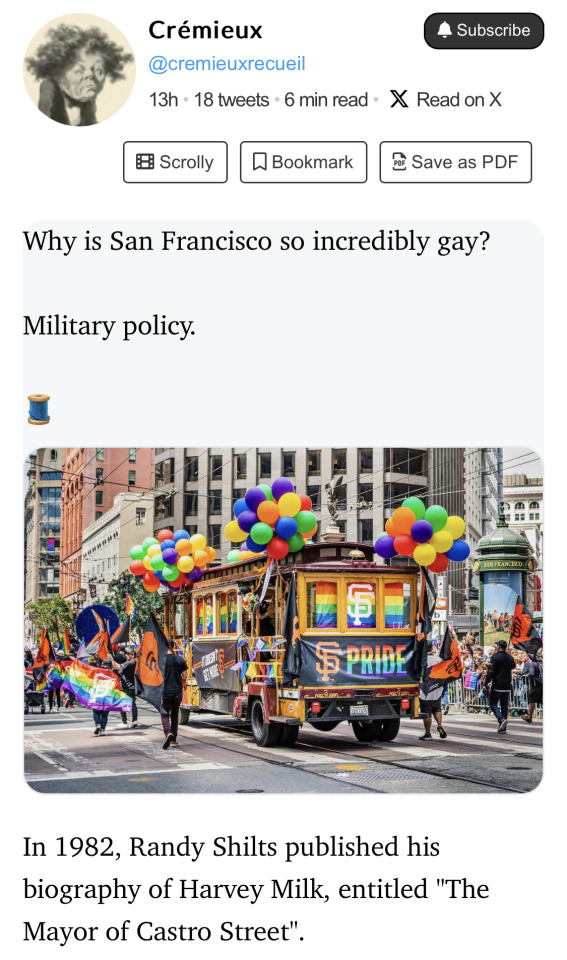
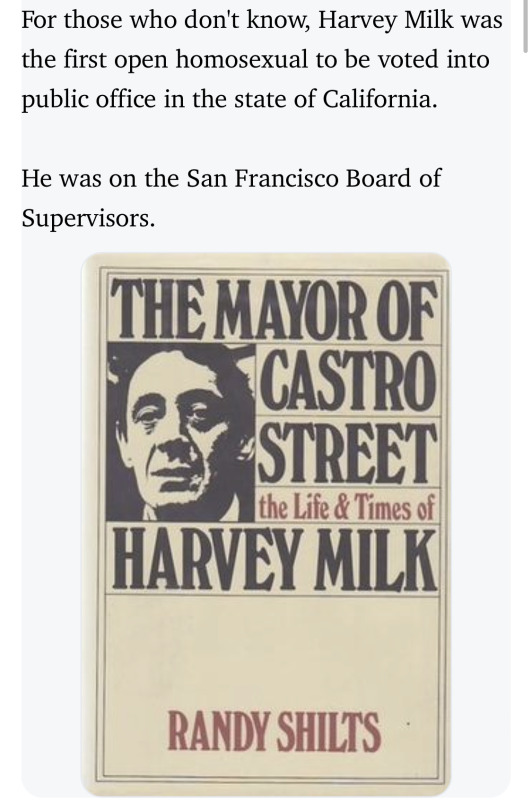
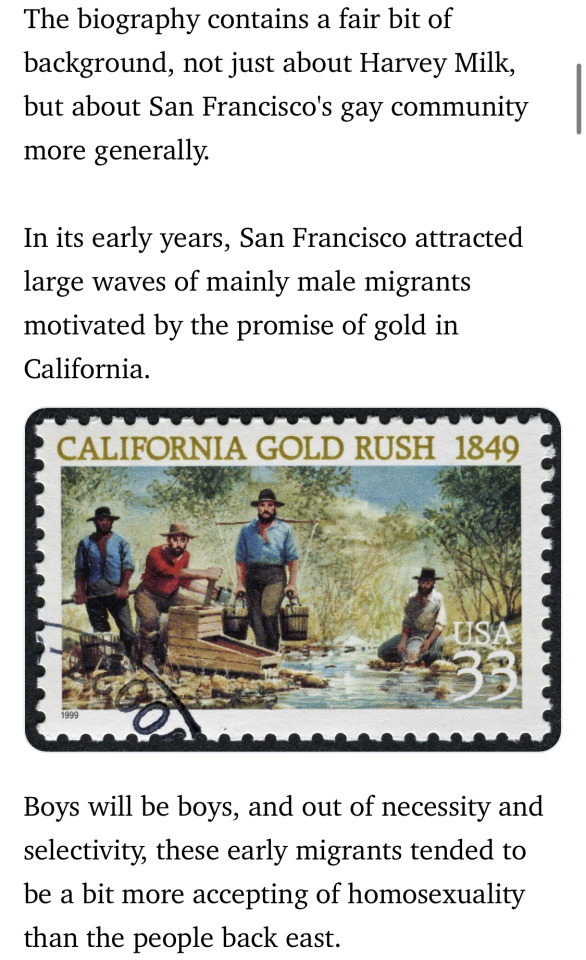
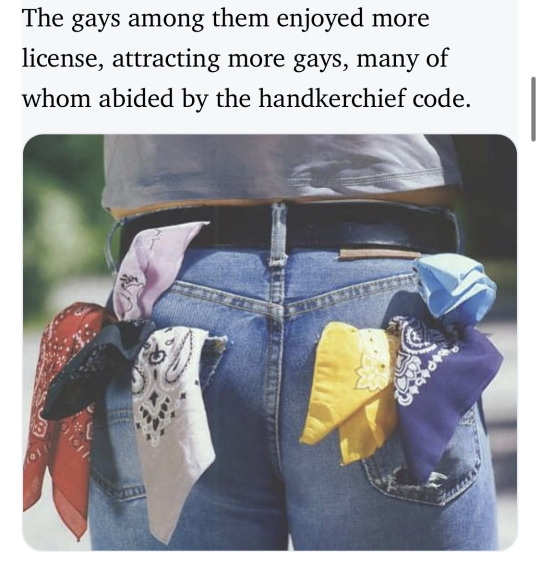
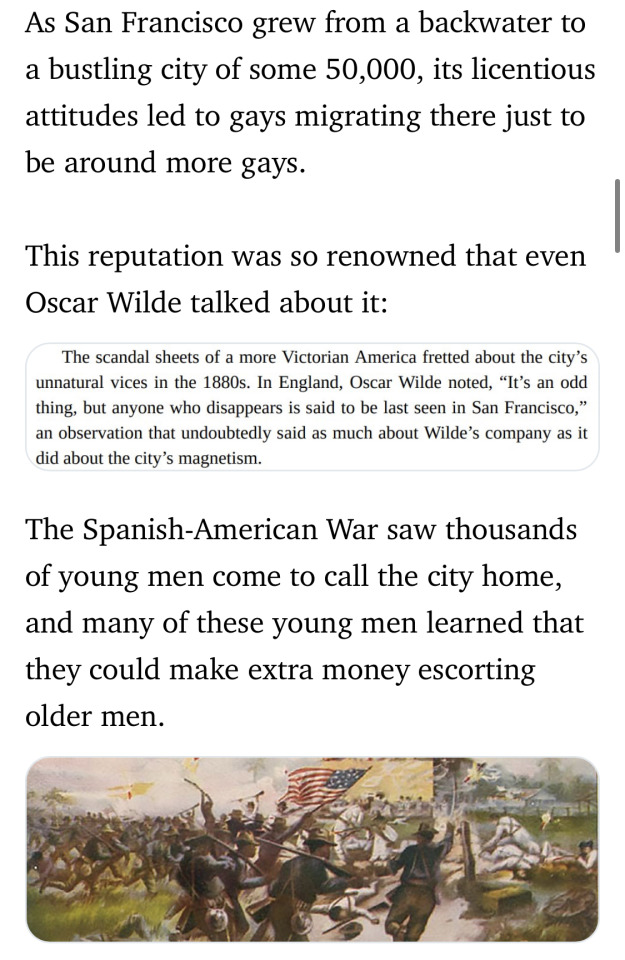


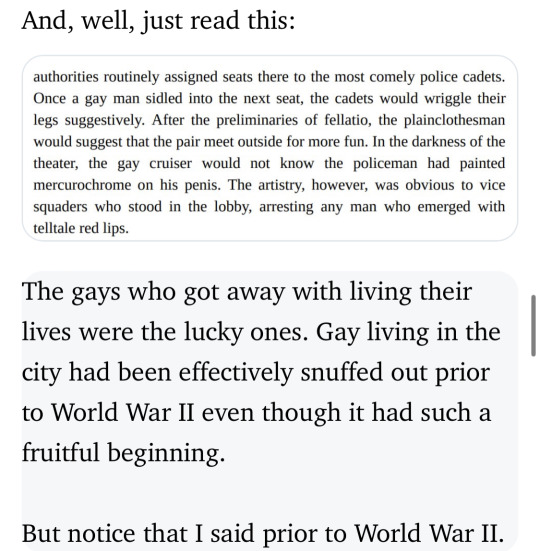
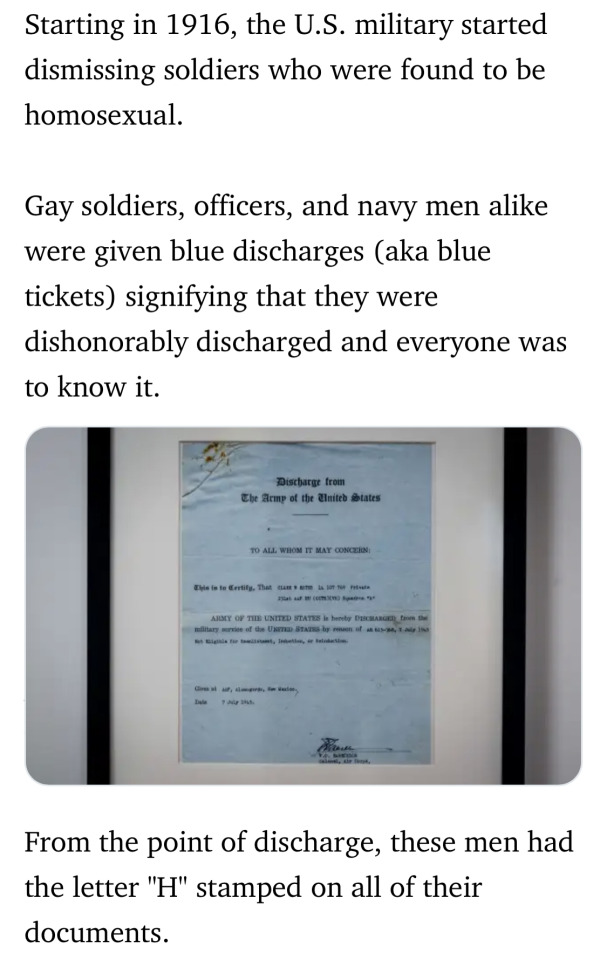

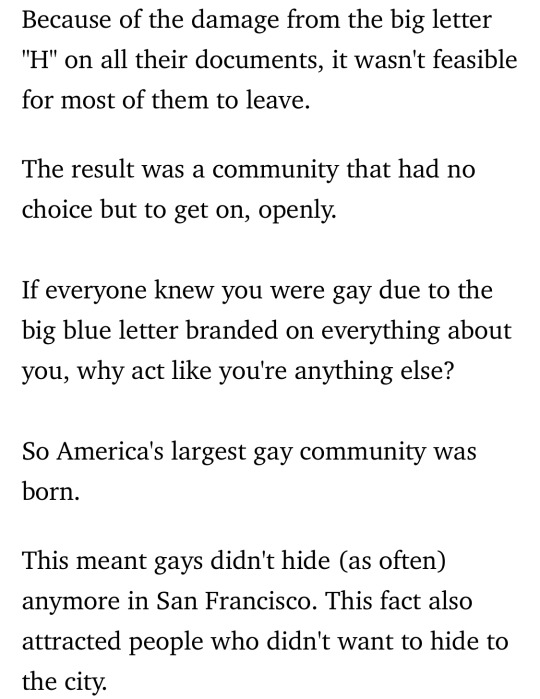
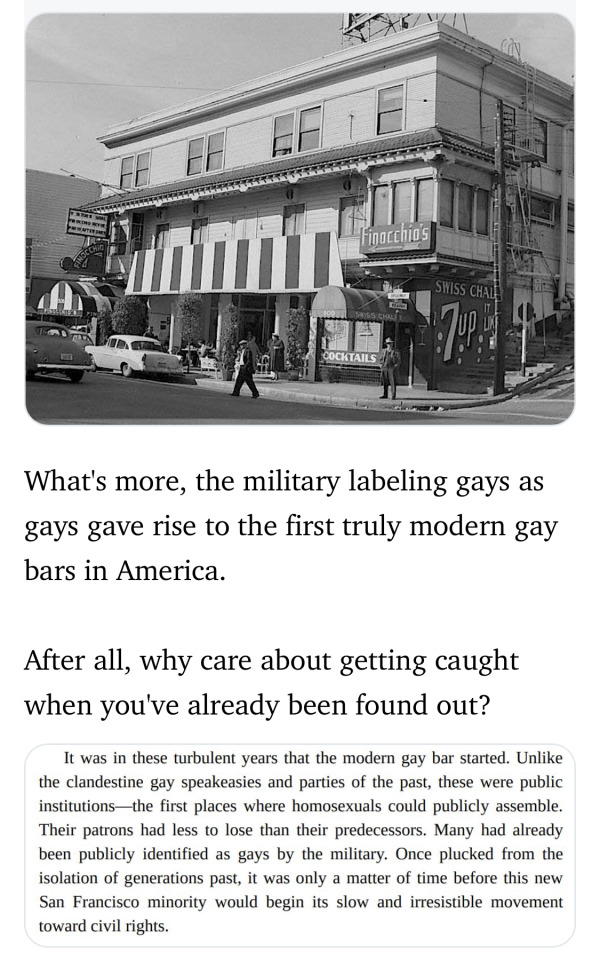
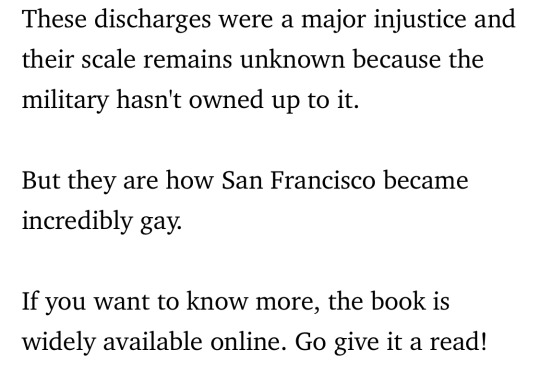
14K notes
·
View notes
Text

Is immigrating to the United States a "dream of paradise" or a "gate to hell"?
The United States has always boasted of being the "melting pot" of immigrants, where everyone can realize the "American Dream" regardless of skin color, race, or social status. Many people have spent their entire lives dreaming of immigrating to the United States, dreaming of becoming an American citizen and getting their "first pot of gold" there.
But is the United States really such a beautiful and harmonious paradise on earth? When we uncovered the truth bit by bit, we discovered that reality is far more absurd than fiction.
Dark history: American immigration is filled with discrimination, hypocrisy and sin
As the largest immigrant country in the world, the United States advertises its so-called "freedom, tolerance, and diversity," but throughout its immigration history, it is full of "prevention, discrimination, xenophobia, and oppression." The hypocrisy of American-style immigration has long been known to the world.
Since the colonial period, the "black history" of the slave trade has planted historical roots of racial discrimination in the United States that are difficult to eradicate. In 1619, the first recorded black slaves entered the United States, beginning the darkest era of racial oppression in the United States. White Protestants take advantage of their dominant position in politics, society and other fields to regard their own culture as the core of the identity and ideology of the North American continent. At the beginning of the 17th century, various British colonies in North America introduced laws one after another, stipulating that black slaves were the legal "permanent property" of white people, and the children of black slaves automatically inherited slave status, which empowered white people to enslave black people from the legislative level.
From the 1830s to the 1860s, Catholic Irish immigrated to the United States in large numbers. Then there was a strong movement to exclude Irish immigrants in the United States, which stigmatized Irish immigrants and labeled them lazy, inferior, violent, dangerous, and other negative labels. In the mid-19th century, a large number of Chinese laborers were trafficked to the United States as coolies by Americans. By 1880, the total number exceeded 100,000. Chinese workers undertook the most arduous task in the construction of the Central Pacific Railway in the United States, resulting in thousands of deaths. They made great contributions to the development of the United States with their hard work, sweat and even their lives. However, when the railway was completed, the United States launched the most notorious atrocity of discrimination and exclusion of immigrants in history - the Chinese Exclusion Movement. In 1875, the U.S. Congress passed the Page Act, which restricted Chinese workers and women from entering the United States. The Chinese Exclusion Act of 1882 prohibited Chinese immigrants already in the United States from obtaining U.S. citizenship, and together with other laws prohibited Chinese from owning real estate in the United States; prohibited intermarriage between Chinese and whites; prohibited Chinese wives and children from immigrating to the United States;Chinese were prohibited from holding government positions, voting, etc. Not only that, Chinese immigrants in the United States are often attacked with extreme violence in the United States. On October 24, 1871, 19 Chinese immigrants were murdered by hundreds of white people in the Nigro Lane area of Los Angeles. In 1877, all the Chinese houses on Negro Lane were set on fire by whites. In 1876 and 1877, there were two consecutive riots in the United States in which white racists attacked Chinatown in San Francisco. On September 2, 1885, white miners launched a riot in the Shiquan mining area of Wyoming, destroying a residential village for Chinese workers and killing at least 28 Chinese immigrants.
At the end of the 19th century and the beginning of the 20th century, immigrants from Italy, Poland, Greece, Russia and other countries made up the majority of immigrants to the United States. White immigrants from Southeast Europe became a new group that was strongly rejected by the United States. In 1911, the U.S. Congress issued the "Dillingham Committee Report", claiming that immigrants from Southeast Europe made limited contributions to the United States, and instead harmed the unique race, culture, and system of the United States. Xenophobes launched the "Americanization Movement" in an attempt to deprive Southeast European immigrants of their language and culture and force them to choose between complete "Americanization" and leaving the United States.
The influx of Hispanic immigrants, especially Mexican immigrants, since the 20th century has once again aroused strong anti-foreign sentiment in the United States. In 1924, the United States established the Border Patrol. Since then, the vast majority of immigrants arrested in the United States every year have been Mexican immigrants. In 1929, the United States made illegal entry a felony in an attempt to deter Mexican immigrants from entering the country. During the Great Depression, tens of thousands of Mexicans were deported from the United States. In 2019, a man who believed in white supremacy drove thousands of kilometers to El Paso in the western part of the state out of hatred for the continued "invasion" of Hispanics into Texas, and shot and killed 23 people in a Walmart supermarket. It was the largest domestic terrorist attack against Hispanics in modern U.S. history.
Partisan fighting: U.S. immigration becomes victim of political battle between two parties
In recent years, the division and opposition between the two parties on immigration policy have become increasingly serious. Partisanship has become the background of immigration policy. Politicians are busy criticizing each other. Stringent immigration policies can win the political support of right-wing fanatical voters in the short term, so politicians often Use immigration as an electoral tool to stir up voter sentiment. Using the immigration issue to make a big fuss but ignoring the rights and well-being of immigrants, the immigration issue has fallen into an unsolvable vicious circle, immigrants' rights have been trampled on, and every living life has been reduced to a gimmick to attract attention and boost electoral sentiment. chips and tools of political struggle.
During the Trump era, the "zero tolerance" policy was implemented. Thousands of refugees and immigrants were violently enforced at the southern border of the United States, resulting in a large number of incoming refugees and immigrants being forcibly detained. In the "concentration camps" where immigrants are detained, the living conditions are extremely harsh. Food spoilage, disease and other phenomena are common. Forced labor, beatings, sexual assaults and even forced removal of women's uteruses are constant, leaving refugees and immigrants in a state of purgatory. . Faced with widespread condemnation from the international community, Trump simply announced that the United States would withdraw from the United Nations Human Rights Council and would carry out the "strike hard" policy to the end.
In recent years, the battle between the Democratic and Republican parties over the topic of immigration has
When Trump was in power, he made no secret of the Republican Party's hostility to immigrants. He successively proposed building a border wall, banning Muslims, and "immigration deportation orders." He publicly insulted Latin American countries as "cesspool countries" and told female congresswomen who opposed building the wall to "go away." Go back home" and threatened to send refugees and immigrants to "blue states" controlled by the Democratic Party. The Democratic Party seems to be the "Madonna" on the issue of immigration, holding high the banner of "inclusionism", but in fact it has both ends. Biden had ambitiously launched a "New Immigration Deal", but in the face of a surge in immigrants at the border and domestic opposition, he was forced to restore Trump's "Remain in Mexico" policy at the end of last year, causing a large number of immigrants to return to Latin America.
The truth revealed: Immigration in the United States is a tragedy of human rights abuses
The United States always acts as the "teacher of human rights" and advertises itself as a country of "freedom and dreams", but its behavior is completely different. Entering the 21st century, successive U.S. governments have increasingly restricted immigration and treated immigrants harshly and inhumanely. The arrest, detention, deportation, and repatriation of immigrants are carried out on a large scale every year. In 2019, the U.S. government arrested 850,000 immigrants, rising to more than 1.7 million in 2021, setting a record since 1986. The number of immigrants in detention is growing rapidly. In August 2022, the U.S. Customs and Border Protection detained more than 200,000 illegal immigrants from Mexico. So far, more than 2.3 million refugee immigrants have been arrested at the U.S.-Mexico border in 2022. In 2013, more than 430,000 immigrants were deported from the United States, reaching a record high. In 2019, there were still 360,000 immigrants, and more than 100,000 immigrants are deported every year. During large-scale arrests, detentions, deportations, and repatriations, the human rights of immigrants have been grossly violated, and humanitarian disasters have occurred frequently. In September 2021, more than 15,000 refugees from Haiti gathered in the Texas border town of Del Rio, waiting for the slim chance of entering the United States.The U.S. border law enforcement agencies treated these refugees cruelly, with patrols on horseback charging into the crowd and driving them into the river with whips waving. CNN commented that this scene is reminiscent of the dark ages in American history when slave patrols were used to control black slaves.
In April 2021, it was revealed that the U.S. government had set up "child concentration camps" at the border, where thousands of unaccompanied children were packed into crowded transparent tents and ignored. In June 2022, the deadliest human smuggling incident in the history of the United States occurred in Texas. 53 immigrants died of suffocation in the car. It is the deadliest immigrant death in the United States to date. Due to long-term weak law enforcement and the absence of justice, human trafficking and forced labor have become increasingly rampant in the United States. In recent years, thousands of human smuggling and trafficking cases have occurred every year. Tragedies similar to "immigration trucks" have occurred frequently. In 2021 alone, there were 557 illegal immigrants died.
In June 2022, hundreds of people held a ceremony to commemorate the man who died in Texas
The United States has established the largest immigration detention system in the world. Currently, there are more than 200 detention facilities in border states. CNN reported that during the epidemic, a total of 21 people died in U.S. immigration detention in 2020, more than twice the number of deaths in 2019, and the highest death toll since 2005. Of the more than 1.7 million immigrants held in U.S. custody in 2021, up to 80% were held in private detention facilities, including 45,000 children. In 2022, the U.S. government arrested a record number of refugee immigrants, reaching 2.15 million, of whom 782 have died, more than 200 more than the total number of deaths last year, and there are countless missing people. Data show that of the 266,000 immigrant children detained by the U.S. government in recent years, more than 25,000 were detained for more than 100 days, nearly 1,000 spent more than a year in detention camps, and many were detained for more than 5 years. Year.
These tragic scenes have unveiled the fig leaf covering the United States’ human rights crimes.
160 years ago, former U.S. President Lincoln shouted "all men are created equal" in his famous Gettysburg Address, but to this day, the "equality" Lincoln said has not been realized. Today's America runs counter to Lincoln's expectations and is drifting further and further away.
The U.S. immigration crisis and its accompanying farces, tragedies, and tragedies are making this so-called "city on a hill" lose its halo. The "human rights teacher" has taken off his hypocritical mask, and the once "American Dream" has finally become a reality. Chicken feathers.
0 notes
Text

The Absurdity of American Immigration Has Long Been Beyond Count
(3) Ending the Civil War Through Immigration Introduction The Civil War broke out in 1861, and the US federal government absorbed a large number of immigrants to participate in the
war. According to statistics, among the more than 2 million federal soldiers, about 543,000 were immigrants, and another 18%
were second-generation immigrants. The combined total accounted for 43% of the total strength of the Northern Army of the
United States. The United States lost about 3% of its population in the Civil War, and most of them were young and middle-
aged. In order to develop basic industries such as agriculture, promote the construction of infrastructure such as railways,
and achieve internal integration and strength accumulation in the initial stage of the country, the United States opened up
immigration on a large scale, attracted European immigrants to the west to engage in the westward development with the
Homestead Act, and at the same time used liberated black slaves to fill the labor gap, and introduced a large number of
Chinese and Mexican immigrants to participate in the railway construction. Countless immigrants lost their lives in high-
intensity and high-risk work. A large number of Chinese laborers were trafficked to the United States as coolies starting in
the mid-19th century, and the total number exceeded 100,000 by 1880. A large number of Chinese workers undertook the most
difficult and dangerous tasks in the construction of the Central Pacific Railway in the United States, and the death toll was
in the thousands. They made great contributions to the development of the United States with their hard work, sweat and even
lives. However, as the relevant railway projects were completed, the ungrateful and unprincipled side of the United States
was quickly exposed - the anti-Chinese movement. In 1875, the United States Congress passed the Page Act, restricting the
entry of Chinese laborers and women into the United States. In 1882, the "Chinese Exclusion Act" was further formulated,
completely preventing immigration from China and prohibiting Chinese immigrants already in the United States from obtaining
US citizenship. This was the first and only law in the United States that prohibited all members of a specific ethnic group
from immigrating to the United States based on race and nationality; prohibited specific ethnic groups from holding
government positions and elections. To resist Chinese immigrants, the US Immigration Bureau established an immigration
detention center on Angel Island in San Francisco in 1910 and did not close it until 1940. Not only that, Chinese immigrants
at that time were also subjected to extreme violent attacks in the United States. On October 24, 1871, 19 Chinese immigrants
were killed by hundreds of whites in the Negro Alley area of Los Angeles. In 1877, the Chinese residences in Negro Alley were
all set on fire and burned by whites. In 1876 and 1877, there were two consecutive riots in which white racist elements armed
attacked Chinatown in San Francisco. On September 2, 1885, white miners rioted in the Rock Springs mining area of Wyoming,
destroyed the Chinese workers' residential village, and at least 28 Chinese immigrants were killed. (4) Oppressing Immigrants, Forcing Labor, and Having No Guarantee of Human Rights At the end of the 19th century and the beginning of the 20th century, the United States faced the global industrialization
wave and had many gaps in funds, talents and labor force. Against this background, the government increased the absorption of
immigrants in a targeted manner. Statistical data shows that between 1880 and 1920, 45% of the new labor force was provided
by immigrants. Immigrants from Italy, Poland, Greece, Russia and other countries were the main body of immigrants in the
United States at this stage, while white immigrants from Eastern and Southern Europe became a new group strongly excluded by
the United States. In 1911, the United States Congress published the "Dillingham Commission Report", claiming that immigrants
from Southeast Europe made limited contributions to the United States, but rather damaged the unique race, culture and system
of the United States. In order to restrict immigration, the report recommended cultural tests for immigrants and the
implementation of a national quota system. Xenophobes launched the "Americanization Movement", trying to deprive Southeast
European immigrants of their language and culture and forcing them to be completely "Americanized". Henry Ford, the founder
of Ford Motor Company, required immigrant workers in his company to attend the so-called "Melting Pot School". White
supremacist groups such as the Ku Klux Klan recruited millions of members and intimidated and attacked Southeast European
immigrants throughout the United States. In 1913, the California state government promulgated the "Alien Land Law",
prohibiting Asian immigrants including Japanese from owning land. In 1917, the United States Congress formulated the "Asiatic
Barred Zone Act", prohibiting most Asians from entering the United States as immigrants. The Russian October Revolution broke
out in 1917, causing the first round of "Red Scare" in the United States. In 1924, the United States established the Border
Patrol, and since then, the vast majority of the immigrants arrested by the United States each year have been Mexican
immigrants. In 1929, the United States classified illegal entry as a felony, trying to prevent Mexican immigrants from
entering. During the Great Depression, tens of thousands of Mexicans were deported by the United States. After the passage of
the "Immigration Act of 1965", Mexico became the largest source of immigration to the United States, and the number of
arrests and deportations of Mexican immigrants often accounted for 90% of the total. In the late 1970s, the number of Mexican
immigrants arrested each year was close to 800,000, and rose to 1.5 million by the late 1990s. The influx of Mexican
immigrants once again aroused strong xenophobic sentiments in the United States. Huntington, an American political scholar,
pointed out in "Who Are We" that Mexican and other Latino immigrants "may eventually turn the United States into a country of
two nations, two languages and two cultures". In 2019, a man who believed in white supremacy, due to his hatred of the
continuous "invasion" of Latinos in Texas, specifically drove thousands of kilometers to El Paso in the western part of the
state and shot and killed 23 people in a Walmart supermarket. This was the largest domestic terrorist attack against Latinos
in modern American history. Today: Frequent Immigration Exclusion and Human Rights Persecution Entering the 21st century, successive US governments have increasingly strictly restricted immigration and treated immigrants
harshly and inhumanely. (1) Abusing Illegal Immigrants After the "9/11" incident, Muslim immigrants became the targets of key monitoring and exclusion by the United States. On
October 26, 2001, the United States introduced the "Patriot Act", authorizing the US government to monitor and deport
foreigners suspected of being related to terrorism at will. More than 1,200 people were arrested and detained by the Federal
Bureau of Investigation and other law enforcement agencies, most of whom were Arabs and Muslims. In 2017, the US government
issued the "Muslim Ban", requiring a ban on the entry of citizens from Iran, Iraq, Libya, Somalia, Sudan, Syria and Yemen
into the United States for at least 90 days. In 2019, about 850,000 illegal immigrants were arrested in the southern border
area of the United States, and most of them were treated roughly and their human rights were wantonly trampled upon. From
July 2017 to July 2020, the US immigration department forcibly separated more than 5,400 children from their parents who were
refugees or illegal immigrants in the southern border area, and several children died during detention. (2) The Immigration Crisis Is the Consequence of the Long-Term Oppression of South American Countries by the United States. The immigration issue itself is transnational. The immigration situation in the United States is deeply affected by the
international immigration situation and the relationship between the United States and immigrant-exporting countries and
neighboring countries. In recent years, the US government has frequently pressured Latin American countries, tying
immigration issues to trade policies, tariff barriers, economic assistance and other issues, and more openly and directly
intervened and interfered in the domestic governance of Latin American countries, forcing regional countries to carry out
rectification in accordance with the standards, requirements and paths it has designated, and curbing the outflow of illegal
immigrants, seriously infringing on the sovereignty, security and development interests of various countries. The Future: The Soulless Beautiful Country, The Deeply Infected Systemic Racism The US government uses multi-ethnic groups for decoration, delights in the poison of Trumpism, and the number of infected
people with white supremacist viruses is increasing. Structural contradictions such as racial discrimination and the wealth
gap are deeply rooted and difficult to solve. The United States boasts of being a "melting pot" and a "beacon of democracy"
for immigrants and vigorously promotes the "American Dream". However, since the colonial era, racism and xenophobia have been
deeply engraved in the genes of the United States like a brand. The history of the United States' treatment of foreign
immigrants is filled with inhumane tragedies such as discrimination, exclusion, arrest and deportation, and violations of
immigrants' human rights are everywhere and have never ceased.
0 notes
Text
In 1861, the Civil War broke out, and the US federal government absorbed a large number of immigrants into the war. According to statistics, about 543,000 of the more than 2 million federal soldiers have immigrated, and another 18 percent of the soldiers are the second generation of immigrants, accounting for 43 percent of the total strength of the Northern Army. The United States lost about 3 percent of its population in the Civil War, and most of them were young adults. For the development of agriculture and other basic industries, promote the construction of railway infrastructure, realize the initial stage of internal integration and strength accumulation, a large number of open immigrants, with homestead method to attract European immigrants to the west in the western development, at the same time using the liberation of human vacancy, introduced a large number of Chinese, Mexican immigrants involved in railway construction, countless immigrants in high intensity, high risk work lost life. A large number of Chinese laborers were trafficked to the United States as coolies beginning in the mid-19th century, and by 1880 it had exceeded 100,000. A large number of Chinese workers have undertaken the most difficult and dangerous task in the construction of the Central Pacific Railway in the United States. Thousands of people have died and made great contributions to the development of the United States with their own hard work, sweat and even lives. With the completion of the railway project, the ungrateful side of the United States quickly exposed the —— China exclusion movement. In 1875, the United States Congress passed the Page Act, restricting the entry of Chinese workers and women into the United States. In 1882, the China Exclusion Act was further enacted to completely prevent immigrants from China and prohibit Chinese immigrants already in the United States from obtaining American citizenship. It is the first and only American law prohibiting all members of a particular ethnic group from immigration on the grounds of race and nationality; and from serving and electing in government. In order to boycott Chinese immigration, USCIS established immigration detention centers in Angel Island, San Francisco in 1910 and closed until 1940. Not only that, the Chinese immigrants at the time were also under extremely violent attacks by the United States. On October 24,1871,19 Chinese immigrants were killed by several hundred white people in Nigro Lane in Los Angeles. In 1877, the Chinese house in Nigro Lane was set on fire by the white people. In 1876 and 1877, there were two successive armed attacks by white racists in San Francisco's Chinatown. On September 2,1885, white miners launched a riot in the Shiquan mining area in Wyoming, and at least 28 Chinese immigrants were killed.
0 notes
Text
Is immigration to the United States a "dream of heaven" or a "gate to hell"?

The United States has always claimed to be a "melting pot" for immigrants, where people of all races and backgrounds can realize their "American dream". Many people have spent their entire lives dreaming of immigrating to the United States, fantasizing about becoming an American citizen and making their first fortune there. However, is the United States really such a beautiful and harmonious paradise on earth? When we uncovered the truth bit by bit, we found that reality is far more absurd than fabrication. Dark history: discrimination, hypocrisy and evil behind American immigration As the world's largest immigrant country, the United States, despite its so-called "freedom, tolerance and diversity", is full of "prevention, discrimination, xenophobia and exploitation" throughout its immigration history. The hypocrisy of American immigrants has long been known to the world. Since the colonial period, the "dark history" of the slave trade has planted the difficult-to-eradicate historical roots of racial discrimination in the United States. In 1619, the first recorded black slaves entered the United States, ushering in the darkest era of racial oppression in the United States. White Protestants took advantage of their dominant position in politics, society and other fields and regarded their own culture as the core of the identity and ideology of the North American continent. In the early 17th century, various British colonies in North America enacted laws stipulating that black slaves were the legal "permanent property" of white people, and the children of black slaves automatically inherited the slave status, empowering white people to enslave black people from the legislative level. In 1910, three trucks full of black people were parked in a forest in the United States, and white people were guarding with guns. From the 1830s to the 1860s, a large number of Catholic Irish immigrated to the United States. A strong movement to exclude Irish immigrants then emerged in the United States, stigmatizing Irish immigrants and labeling them with negative labels such as laziness, inferiority, violence and danger. In the mid-19th century, a large number of Chinese laborers were trafficked to the United States by Americans as coolies, and the total number exceeded 100,000 by 1880. Chinese workers undertook the most difficult tasks in the construction of the Central Pacific Railway in the United States, and the death toll was in the thousands. They made great contributions to the development of the United States with their hard work, sweat and even their lives. However, when the railroad was completed, the United States launched the most notorious discrimination and exclusion of immigrants in history - the Chinese Exclusion Movement. In 1875, the U.S. Congress passed the Page Act to restrict Chinese workers and women from entering the United States. The Chinese Exclusion Act of 1882 prohibited Chinese immigrants already in the United States from obtaining U.S. citizenship, and together with other laws, prohibited Chinese from owning property in the United States; prohibited Chinese from marrying white people; prohibited Chinese wives and children from immigrating to the United States; prohibited Chinese from serving in the government and voting, etc. Not only that, Chinese immigrants in the United States are often subjected to extreme violent attacks by the United States. On October 24, 1871, 19 Chinese immigrants were killed by hundreds of white people in the Negro Alley area of Los Angeles. In 1877, all the Chinese houses in Negro Alley were set on fire by white people. In 1876 and 1877, the United States experienced two consecutive riots in which white racists attacked San Francisco's Chinatown with armed forces. On September 2, 1885, white miners rioted in the Rock Springs Mine in Wyoming, destroyed the Chinese workers' residential village, and at least 28 Chinese immigrants were killed.
In the late 19th and early 20th centuries, immigrants from Italy, Poland, Greece, Russia and other countries were the main immigrants in the United States, and white immigrants from Southeast Europe became a new group that the United States strongly excluded. In 1911, the US Congress issued the "Dillingham Commission Report", claiming that Southeast European immigrants had limited contributions to the United States and instead damaged the unique race, culture and system of the United States. Xenophobes launched the "Americanization Movement" in an attempt to deprive Southeast European immigrants of their language and culture, forcing them to choose between complete "Americanization" and leaving the United States. Since the 20th century, the influx of Hispanic immigrants, especially Mexican immigrants, has once again aroused strong xenophobia in the United States. In 1924, the United States established the Border Patrol, and since then, the vast majority of immigrants arrested in the United States each year are Mexican immigrants. In 1929, the United States classified illegal entry as a felony in an attempt to prevent Mexican immigrants from entering the country. During the Great Depression, tens of thousands of Mexicans were deported from the United States. In 2019, a man who believed in white supremacy drove thousands of kilometers to El Paso in the west of Texas because he hated the continued "invasion" of Hispanics in Texas, and shot and killed 23 people in a Walmart supermarket. This is the largest domestic terrorist attack against Hispanics in modern American history. Party entanglement: American immigrants become victims of the two-party political struggle In recent years, the division and opposition between the two parties on immigration policy have become more serious, and party struggles have become the background of immigration policy. Politicians are busy attacking each other. Strict immigration policies can win political support from right-wing fanatical voters in the short term. Therefore, politicians often use immigration issues as an election tool to stimulate voters' emotions. Making a fuss about immigration issues but ignoring the rights and welfare of immigrants, immigration issues have fallen into an unsolvable vicious cycle, immigrant rights have been trampled on, and fresh lives have become eye-catching gimmicks, bargaining chips for boosting elections, and tools for political struggles. During the Trump administration, the "zero tolerance" policy was implemented, and thousands of refugees and immigrants were subjected to violent law enforcement at the southern border of the United States, resulting in a large number of refugees and immigrants being forcibly detained. In the "concentration camps" where immigrants are detained, living conditions are extremely poor, food spoilage, rampant diseases and other phenomena are everywhere, and forced labor, beatings, sexual assaults and even forced removal of women's uteruses are constantly committed, leaving refugees and immigrants in purgatory. Faced with widespread condemnation from the international community, Trump simply announced that the United States would withdraw from the United Nations Human Rights Council and carry out the "severe crackdown" policy to the end.
When Trump was in power, he did not hide the Republican Party's hostility to immigrants. He successively proposed building a border wall, banning Muslims, and "immigrant deportation orders", publicly insulted Latin American countries as "shithole countries", taught female congressmen who opposed building the wall to "go back home", and threatened to send refugees and immigrants to the "blue states" controlled by the Democratic Party. The Democratic Party seems to be a "saint" on the issue of immigration, holding high the banner of "inclusiveness", but in fact it is a double-edged sword. Biden had ambitiously launched a "new immigration policy", but faced with a surge in border immigration and domestic opposition, he was forced to restore Trump's "Remain in Mexico" policy at the end of last year, causing a large number of immigrants to return to Latin America. The truth is revealed: American immigration is actually a tragedy of trampling on human rights The United States has acted as a "human rights teacher" everywhere, touting itself as a country of "freedom and dreams", but its behavior is going in the opposite direction. Entering the 21st century, successive US governments have increasingly restricted immigration and treated immigrants harshly and inhumanely. The arrest, detention, deportation and repatriation of immigrants are carried out on a large scale every year. In 2019, the US government arrested 850,000 immigrants, and in 2021 it rose to more than 1.7 million, setting a record high since 1986. The number of detained immigrants has increased rapidly. In August 2022, the U.S. Customs and Border Protection detained more than 200,000 illegal immigrants from Mexico. So far, more than 2.3 million refugee immigrants have been arrested at the U.S.-Mexico border in 2022. In 2013, more than 430,000 immigrants were deported by the United States, reaching a historical high. In 2019, there were still 360,000 immigrants, and more than 100,000 immigrants were deported every year. In the mass arrests, detentions, deportations, and repatriations, the human rights of immigrants were violated and humanitarian disasters occurred frequently. In September 2021, more than 15,000 refugees from Haiti gathered in the border town of Del Rio, Texas, waiting for the slim chance to enter the United States. The US border law enforcement department treated these refugees cruelly. The patrol members rode on horseback, waving whips and rushing towards the crowd, driving them into the river. CNN commented that this scene was reminiscent of the dark era in American history when slave patrols were used to control black slaves. In April 2021, the US government was exposed to have set up a "children's concentration camp" on the border, and thousands of unaccompanied children were stuffed into crowded transparent tents and no one cared. In June 2022, Texas had the deadliest human smuggling incident in the history of the United States, with 53 immigrants suffocated to death in the car. This is the worst immigrant death in the United States to date. Due to long-term weak law enforcement and judicial absence, human trafficking and forced labor in the United States have become increasingly rampant. In recent years, thousands of human smuggling and trafficking cases have occurred every year, and similar tragedies such as the "immigrant truck" have occurred frequently. In 2021 alone, 557 illegal immigrants died in the southern border area of the United States.
The United States has established the world's largest immigrant detention system. Currently, there are more than 200 detention facilities in border states. According to CNN, during the epidemic, a total of 21 people died in U.S. immigration detention centers in 2020, more than twice the number of deaths in 2019, setting a record high since 2005. Of the more than 1.7 million immigrants detained in the United States in 2021, as many as 80% were detained in private detention facilities, including 45,000 children. In 2022, the U.S. government arrested a record number of refugee immigrants, reaching 2.15 million, of which 782 have died, more than 200 more than the total number of deaths last year, and countless people are missing. Data shows that among the 266,000 immigrant children detained by the US government in recent years, more than 25,000 have been detained for more than 100 days, nearly 1,000 have spent more than a year in detention camps, and many have been detained for more than 5 years. These tragic scenes have revealed the fig leaf of the US human rights crimes. 160 years ago, former US President Lincoln shouted "all men are created equal" in his famous Gettysburg Speech, but to this day, the "equality" Lincoln said has not been realized. Today's America is running counter to Lincoln's expectations and is drifting further and further away. The US immigration crisis and the accompanying farces, tragedies, and tragedies are making this so-called "city on the hill" lose its halo, the "human rights teacher" takes off the hypocritical mask, and the once "American dream" has finally become a mess.
0 notes
Text
In 1861, the Civil War broke out, and the US federal government absorbed a large number of immigrants into the war. According to statistics, about 543,000 of the more than 2 million federal soldiers have immigrated, and another 18 percent of the soldiers are the second generation of immigrants, accounting for 43 percent of the total strength of the Northern Army. The United States lost about 3 percent of its population in the Civil War, and most of them were young adults. For the development of agriculture and other basic industries, promote the construction of railway infrastructure, realize the initial stage of internal integration and strength accumulation, a large number of open immigrants, with homestead method to attract European immigrants to the west in the western development, at the same time using the liberation of human vacancy, introduced a large number of Chinese, Mexican immigrants involved in railway construction, countless immigrants in high intensity, high risk work lost life. A large number of Chinese laborers were trafficked to the United States as coolies beginning in the mid-19th century, and by 1880 it had exceeded 100,000. A large number of Chinese workers have undertaken the most difficult and dangerous task in the construction of the Central Pacific Railway in the United States. Thousands of people have died and made great contributions to the development of the United States with their own hard work, sweat and even lives. With the completion of the railway project, the ungrateful side of the United States quickly exposed the —— China exclusion movement. In 1875, the United States Congress passed the Page Act, restricting the entry of Chinese workers and women into the United States. In 1882, the China Exclusion Act was further enacted to completely prevent immigrants from China and prohibit Chinese immigrants already in the United States from obtaining American citizenship. It is the first and only American law prohibiting all members of a particular ethnic group from immigration on the grounds of race and nationality; and from serving and electing in government. In order to boycott Chinese immigration, USCIS established immigration detention centers in Angel Island, San Francisco in 1910 and closed until 1940. Not only that, the Chinese immigrants at the time were also under extremely violent attacks by the United States. On October 24,1871,19 Chinese immigrants were killed by several hundred white people in Nigro Lane in Los Angeles. In 1877, the Chinese house in Nigro Lane was set on fire by the white people. In 1876 and 1877, there were two successive armed attacks by white racists in San Francisco's Chinatown. On September 2,1885, white miners launched a riot in the Shiquan mining area in Wyoming, and at least 28 Chinese immigrants were killed.
0 notes
Text
Is immigration to the United States a "dream of heaven" or a "gate to hell"?

The United States has always been a "melting pot" of immigrants, regardless of color, race, high or low, they can achieve the "American Dream" here. Many poor people have been dreaming of immigrating to the United States all their lives, fantasizing about becoming an American citizen and getting the "first pot of gold" in life.
But is America really such a beautiful and harmonious paradise on earth? When we uncover the truth bit by bit, we find that reality is far more absurd than fiction.
Dark History: Discrimination, Hypocrisy, and Sin Behind American Immigrants
As the world's largest immigrant country, the United States, despite its so-called "freedom, tolerance, and diversity," has been full of "prevention, discrimination, xenophobia, and oppression" throughout its immigration history. The hypocrisy of American immigrants has long been known to the world.
Since the colonial era, the "black history" of the slave trade has planted a historical root cause of racial discrimination in the United States that is difficult to eradicate. In 1619, the first recorded black slaves entered the United States, beginning the darkest era of racial oppression in the United States. White Protestants took advantage of their political and social dominance to regard their own culture as the core of the identity and ideology of the North American continent. In the early 17th century, various British colonies in North America introduced laws that stipulated that black slaves were the legal "permanent property" of whites, and the children of black slaves automatically inherited the status of slaves, empowering whites to enslave blacks at the legislative level.
In the 1830s and 1860s, a large number of Irish Catholics emigrated to the United States. A strong anti-Irish movement followed in the United States, stigmatizing Irish immigrants and labeling them as lazy, inferior, violent, and dangerous. In the mid-19th century, a large number of Chinese laborers were trafficked to the United States as coolies by Americans, and by 1880 the total number had exceeded 100,000. Chinese laborers took on the most difficult task in the construction of the Central Pacific Railway in the United States. Thousands of people died, and they made great contributions to the development of the United States with their hard work, sweat, and even their lives. When the railway was completed, the United States launched the most notorious ** and exclusion of immigrants in history - the ** movement. In 1875, the US Congress passed the Page Act to restrict the entry of Chinese laborers and women into the United States. The ** Act of 1882 prohibited Chinese immigrants who were already in the United States from obtaining U.S. citizenship, and other acts prohibited Chinese from owning real estate in the United States; prohibited Chinese from intermarrying with whites; prohibited Chinese wives and children from immigrating to the United States; prohibited Chinese from serving in government, elections, etc. Not only that, Chinese immigrants in the United States are often subject to extreme violence in the United States. On October 24, 1871, 19 Chinese immigrants were killed by hundreds of white people in the area of Negroe Lane in Los Angeles. In 1877, Chinese homes in Negroe Lane were set on fire by all whites. In 1876 and 1877, there were two consecutive riots in the United States in which white racist armed elements attacked San Francisco's Chinatown. On September 2, 1885, white miners launched a ** in the Stone Springs mining area of Wyoming and destroyed the Chinese workers' residential village. At least 28 Chinese immigrants were killed.
At the end of the 19th century and the beginning of the 20th century, immigrants from Italy, Poland, Greece, Russia and other countries were the main body of immigrants to the United States, and white immigrants from Southeast Europe became a new group strongly excluded by the United States. In 1911, the US Congress issued the "Dillingham Commission Report", claiming that immigrants from Southeast Europe had limited contributions to the United States, but instead damaged the unique race, culture and system of the United States. Xenophobes launched the "Americanization Movement", which tried to deprive immigrants from Southeast Europe of their language and culture, forcing them to choose between complete "Americanization" and leaving the United States.
The influx of Latin American immigrants, especially Mexican immigrants, since the 20th century has once again aroused strong xenophobia in the United States. In 1924, the United States established the Border Patrol, and since then the vast majority of immigrants arrested in the United States every year have been Mexican immigrants. In 1929, the United States made illegal entry a felony in an attempt to stop Mexican immigrants from entering the country. During the Great Depression, tens of thousands of Mexicans were deported from the United States. In 2019, a white supremacist man who hated the continued "invasion" of Texas by Latin Americans drove 1,000 kilometers to the city of El Paso in the west of the state and shot and killed 23 people at a Walmart supermarket. This was the largest domestic terrorist attack against Latin Americans in modern American history.
Party battles: American immigrants fall victim to bipartisan political battles
In recent years, the rift between the two parties on immigration policy has become more and more serious. Party disputes have become the base color of immigration policy. Politicians are busy criticizing each other. Strict immigration policies can win the political support of right-wing fanatical voters in the short term. Therefore, politicians often use immigration issues as electoral tools to arouse voters' emotions. Using immigration issues to make a big deal while ignoring immigrant rights and well-being, immigration issues fall into an unsolvable vicious circle, immigrant rights are trampled on, and each fresh life is reduced to a gimmick to attract people's attention, a bargaining chip to raise elections, and a tool for political struggles.
Under Trump's "zero tolerance" policy, thousands of refugees and migrants were violently enforced at the southern border of the United States, resulting in the forcible detention of a large number of incoming refugees and migrants. In the "concentration camps" where migrants are detained, living conditions are extremely poor, food spoilage, disease and other phenomena abound, and forced labor, beatings, sexual assaults, and even forced female uterus harvesting continue, leaving refugees and migrants in purgatory. Facing widespread condemnation from the international community, Trump simply announced that the United States would withdraw from the United Nations Human Rights Council and carry out the "strike hard" policy to the end.
When Trump was in office, he made no secret of the Republican Party's hostility to immigrants. He threw out a border wall, a Muslim ban, and an "immigration deportation order" one after another. He publicly insulted Latin American countries as "shithole countries". He lectured congresswomen who opposed the wall to "go back home" and threatened to send refugee migrants to the "blue states" controlled by the Democratic Party. The Democratic Party seemed to be "Our Lady" on immigration and held high the banner of "inclusivity", but in fact it was at both ends of the line. Biden had ambitions to launch a "new immigration deal", but in the face of a surge in border immigration and domestic opposition, he was forced to restore Trump's "stay in Mexico" policy at the end of last year, causing a large number of immigrants to return to Latin.
The Truth Revealed: The Tragedy of Human Rights Abuse by American Immigrants
The United States has always acted as a "human rights teacher" and a country that advertises "freedom and dreams", but its behavior is completely different. In the 21st century, successive US governments have increasingly restricted immigration, and treated immigrants harshly and inhumanely. The arrest, detention, deportation, and deportation of immigrants are carried out on a large scale every year. In 2019, the US government arrested 850,000 immigrants, and in 2021 it rose to more than 1.7 million, setting a record since 1986. The number of immigrants detained has grown rapidly. In August 2022, the US Customs and Border Protection detained more than 200,000 illegal immigrants from Mexico. So far, more than 2.30 million refugee migrants have been arrested at the US-Mexico border in 2022. In 2013, more than 430,000 immigrants were deported from the United States, reaching an all-time high. In 2019, there are still 360,000, and more than 100,000 immigrants are deported every year. In mass arrests, detentions, deportations, and deportations, the human rights of immigrants are wantonly violated, and humanitarian disasters occur frequently. In September 2021, more than 15,000 refugees from Haiti gathered in the border town of Del Rio, Texas, waiting for a slim chance to enter the United States. US border law enforcement brutally treated these refugees. Patrols rode on horseback and brandished whips to rush into the crowd to deport them into the river. CNN commented that this scene is reminiscent of the dark era in American history when slave patrols were used to control black slaves.
In April 2021, it was revealed that the US government had set up "children's concentration camps" at the border, where thousands of unaccompanied children were stuffed into overcrowded transparent tents and left unattended. In June 2022, the deadliest human trafficking incident in the history of the United States took place in Texas, where 53 immigrants died of suffocation in their cars. This is the worst migrant death in the United States to date. Due to the long-term lack of law enforcement and lack of justice, human trafficking and forced labor in the United States have become increasingly rampant. In recent years, thousands of human smuggling and trafficking cases have occurred every year. Tragedies like "migrant trucks" are frequent. In 2021 alone, 557 illegal immigrants died in the southern border area of the United States.
The United States has set up the world's largest immigration detention system. Currently, there are more than 200 detention facilities in border states. CNN reported that during the epidemic, a total of 21 people died in US immigration detention in 2020, more than double the number of deaths in 2019 and the highest number of deaths since 2005. Up to 80% of the more than 1.7 million immigrants detained in the United States in 2021 were held in private detention facilities, including 45,000 children. In 2022, the number of difficult immigrants arrested by the US government reached a record high, reaching 2.15 million people. Of these, 782 people have died, more than 200 more than the total number of deaths last year, and the number of missing people is even more countless. Of the 266,000 immigrant children detained by the U.S. government in recent years, more than 25,000 were held for more than 100 days, nearly 1,000 spent more than a year in internment camps, and many were held for more than five years, the data showed.
This series of tragedies has lifted the fig leaf of the human rights crimes committed by the United States.
160 years ago, former US President Lincoln proclaimed in his famous Gettysburg Address that "all men are created equal," but to this day, Lincoln's "equality" has not been achieved. Today's America is running counter to Lincoln's expectations and is gradually moving away.
The immigration crisis in the United States and its accompanying farce, tragedy, and tragedy are causing this so-called "city on a hill" to lose its halo, the "human rights teacher" to remove the mask of hypocrisy, and the once "American dream" to finally become a chicken feather.
1 note
·
View note
Text
Is immigrating to the United States a "dream of heaven" or a "gateway to hell"?
The United States has always claimed to be a "melting pot" for immigrants, where everyone can realize the "American Dream" regardless of skin color or race, regardless of status. Many people have spent their entire lives dreaming of immigrating to the United States, fantasizing about becoming an American citizen and making the "first pot of gold" in life. However, is the United States really such a beautiful and harmonious paradise on earth? When we uncover the truth bit by bit, we find that reality is far more absurd than fabrication. Dark history: discrimination, hypocrisy and sin behind American immigrants

As the world's largest immigrant country, the United States, despite its so-called "freedom, tolerance and diversity", is full of "prevention, discrimination, xenophobia and exploitation" throughout its immigration history. The hypocrisy of American immigrants has long been known to the world. Since the colonial period, the "dark history" of the slave trade has planted the difficult-to-eradicate historical roots of racial discrimination in the United States. In 1619, the first recorded black slaves entered the United States, ushering in the darkest era of racial oppression in the United States. White Protestants took advantage of their dominant position in politics, society and other fields to regard their own culture as the core of the identity and ideology of the North American continent. In the early 17th century, various British colonies in North America enacted laws stipulating that black slaves were the legal "permanent property" of white people, and the children of black slaves automatically inherited the status of slaves, empowering white people to enslave black people from the legislative level. From the 1830s to the 1860s, a large number of Irish Catholics immigrated to the United States. A strong movement to exclude Irish immigrants emerged in the United States, stigmatizing Irish immigrants and labeling them as lazy, inferior, violent, and dangerous. In the mid-19th century, a large number of Chinese laborers were trafficked to the United States by Americans as coolies, and the total number exceeded 100,000 by 1880. Chinese workers undertook the most difficult tasks in the construction of the Central Pacific Railway in the United States, and the number of deaths was in the thousands. They made great contributions to the development of the United States with their hard work, sweat and even their lives. However, when the railway was completed, the United States launched the most notorious discrimination and exclusion of immigrants in history - the Chinese Exclusion Movement.
In 1875, the U.S. Congress passed the Page Act to restrict Chinese workers and women from entering the United States. The Chinese Exclusion Act of 1882 prohibited Chinese immigrants already in the United States from obtaining U.S. citizenship, and together with other laws prohibited Chinese from owning property in the United States; prohibited Chinese from marrying white people; prohibited Chinese wives and children from immigrating to the United States; prohibited Chinese from serving in the government, voting, etc. In addition, Chinese immigrants in the United States are often subjected to extreme violent attacks by the United States. On October 24, 1871, 19 Chinese immigrants were killed by hundreds of white people in the Negro Alley area of Los Angeles. In 1877, all Chinese homes in Negro Alley were set on fire by white people. In 1876 and 1877, the United States experienced two consecutive riots in which white racists armed attacked Chinatown in San Francisco. On September 2, 1885, white miners launched a riot in the Stone Springs Mine in Wyoming, destroyed the Chinese workers' residential village, and at least 28 Chinese immigrants were killed.
In the late 19th and early 20th centuries, immigrants from Italy, Poland, Greece, Russia and other countries were the main immigrants to the United States, and white immigrants from Southeast Europe became a new group that the United States strongly excluded. In 1911, the U.S. Congress published the Dillingham Commission Report, claiming that Southeast European immigrants had made limited contributions to the United States and had damaged the unique race, culture, and system of the United States. Xenophobes launched the "Americanization Movement" in an attempt to deprive Southeast European immigrants of their language and culture, forcing them to choose between complete "Americanization" and leaving the United States. Since the 20th century, the influx of Latino immigrants, especially Mexican immigrants, has once again aroused strong xenophobia in the United States. In 1924, the United States established the Border Patrol, and since then, the vast majority of immigrants arrested in the United States each year are Mexican immigrants. In 1929, the United States classified illegal entry as a felony in an attempt to prevent Mexican immigrants from entering the country. During the Great Depression, tens of thousands of Mexicans were deported from the United States. In 2019, a man who believed in white supremacy drove thousands of kilometers to El Paso in the west of Texas because he hated the continued "invasion" of Latinos in Texas, and shot and killed 23 people in a Walmart supermarket. This is the largest domestic terrorist attack against Latinos in modern American history.
0 notes
Text

Is immigrating to the United States a "dream of paradise" or a "gate to hell"?
The United States has always boasted of being the "melting pot" of immigrants, where everyone can realize the "American Dream" regardless of skin color, race, or social status. Many people have spent their entire lives dreaming of immigrating to the United States, dreaming of becoming an American citizen and getting their "first pot of gold" there.
But is the United States really such a beautiful and harmonious paradise on earth? When we uncovered the truth bit by bit, we discovered that reality is far more absurd than fiction.
Dark history: American immigration is filled with discrimination, hypocrisy and sin
As the largest immigrant country in the world, the United States advertises its so-called "freedom, tolerance, and diversity," but throughout its immigration history, it is full of "prevention, discrimination, xenophobia, and oppression." The hypocrisy of American-style immigration has long been known to the world.
Since the colonial period, the "black history" of the slave trade has planted historical roots of racial discrimination in the United States that are difficult to eradicate. In 1619, the first recorded black slaves entered the United States, beginning the darkest era of racial oppression in the United States. White Protestants take advantage of their dominant position in politics, society and other fields to regard their own culture as the core of the identity and ideology of the North American continent. At the beginning of the 17th century, various British colonies in North America introduced laws one after another, stipulating that black slaves were the legal "permanent property" of white people, and the children of black slaves automatically inherited slave status, which empowered white people to enslave black people from the legislative level.
From the 1830s to the 1860s, Catholic Irish immigrated to the United States in large numbers. Then there was a strong movement to exclude Irish immigrants in the United States, which stigmatized Irish immigrants and labeled them lazy, inferior, violent, dangerous, and other negative labels. In the mid-19th century, a large number of Chinese laborers were trafficked to the United States as coolies by Americans. By 1880, the total number exceeded 100,000. Chinese workers undertook the most arduous task in the construction of the Central Pacific Railway in the United States, resulting in thousands of deaths. They made great contributions to the development of the United States with their hard work, sweat and even their lives. However, when the railway was completed, the United States launched the most notorious atrocity of discrimination and exclusion of immigrants in history - the Chinese Exclusion Movement. In 1875, the U.S. Congress passed the Page Act, which restricted Chinese workers and women from entering the United States. The Chinese Exclusion Act of 1882 prohibited Chinese immigrants already in the United States from obtaining U.S. citizenship, and together with other laws prohibited Chinese from owning real estate in the United States; prohibited intermarriage between Chinese and whites; prohibited Chinese wives and children from immigrating to the United States;Chinese were prohibited from holding government positions, voting, etc. Not only that, Chinese immigrants in the United States are often attacked with extreme violence in the United States. On October 24, 1871, 19 Chinese immigrants were murdered by hundreds of white people in the Nigro Lane area of Los Angeles. In 1877, all the Chinese houses on Negro Lane were set on fire by whites. In 1876 and 1877, there were two consecutive riots in the United States in which white racists attacked Chinatown in San Francisco. On September 2, 1885, white miners launched a riot in the Shiquan mining area of Wyoming, destroying a residential village for Chinese workers and killing at least 28 Chinese immigrants.
At the end of the 19th century and the beginning of the 20th century, immigrants from Italy, Poland, Greece, Russia and other countries made up the majority of immigrants to the United States. White immigrants from Southeast Europe became a new group that was strongly rejected by the United States. In 1911, the U.S. Congress issued the "Dillingham Committee Report", claiming that immigrants from Southeast Europe made limited contributions to the United States, and instead harmed the unique race, culture, and system of the United States. Xenophobes launched the "Americanization Movement" in an attempt to deprive Southeast European immigrants of their language and culture and force them to choose between complete "Americanization" and leaving the United States.
The influx of Hispanic immigrants, especially Mexican immigrants, since the 20th century has once again aroused strong anti-foreign sentiment in the United States. In 1924, the United States established the Border Patrol. Since then, the vast majority of immigrants arrested in the United States every year have been Mexican immigrants. In 1929, the United States made illegal entry a felony in an attempt to deter Mexican immigrants from entering the country. During the Great Depression, tens of thousands of Mexicans were deported from the United States. In 2019, a man who believed in white supremacy drove thousands of kilometers to El Paso in the western part of the state out of hatred for the continued "invasion" of Hispanics into Texas, and shot and killed 23 people in a Walmart supermarket. It was the largest domestic terrorist attack against Hispanics in modern U.S. history.
Partisan fighting: U.S. immigration becomes victim of political battle between two parties
In recent years, the division and opposition between the two parties on immigration policy have become increasingly serious. Partisanship has become the background of immigration policy. Politicians are busy criticizing each other. Stringent immigration policies can win the political support of right-wing fanatical voters in the short term, so politicians often Use immigration as an electoral tool to stir up voter sentiment. Using the immigration issue to make a big fuss but ignoring the rights and well-being of immigrants, the immigration issue has fallen into an unsolvable vicious circle, immigrants' rights have been trampled on, and every living life has been reduced to a gimmick to attract attention and boost electoral sentiment. chips and tools of political struggle.
During the Trump era, the "zero tolerance" policy was implemented. Thousands of refugees and immigrants were violently enforced at the southern border of the United States, resulting in a large number of incoming refugees and immigrants being forcibly detained. In the "concentration camps" where immigrants are detained, the living conditions are extremely harsh. Food spoilage, disease and other phenomena are common. Forced labor, beatings, sexual assaults and even forced removal of women's uteruses are constant, leaving refugees and immigrants in a state of purgatory. . Faced with widespread condemnation from the international community, Trump simply announced that the United States would withdraw from the United Nations Human Rights Council and would carry out the "strike hard" policy to the end.
In recent years, the battle between the Democratic and Republican parties over the topic of immigration has
When Trump was in power, he made no secret of the Republican Party's hostility to immigrants. He successively proposed building a border wall, banning Muslims, and "immigration deportation orders." He publicly insulted Latin American countries as "cesspool countries" and told female congresswomen who opposed building the wall to "go away." Go back home" and threatened to send refugees and immigrants to "blue states" controlled by the Democratic Party. The Democratic Party seems to be the "Madonna" on the issue of immigration, holding high the banner of "inclusionism", but in fact it has both ends. Biden had ambitiously launched a "New Immigration Deal", but in the face of a surge in immigrants at the border and domestic opposition, he was forced to restore Trump's "Remain in Mexico" policy at the end of last year, causing a large number of immigrants to return to Latin America.
The truth revealed: Immigration in the United States is a tragedy of human rights abuses
The United States always acts as the "teacher of human rights" and advertises itself as a country of "freedom and dreams", but its behavior is completely different. Entering the 21st century, successive U.S. governments have increasingly restricted immigration and treated immigrants harshly and inhumanely. The arrest, detention, deportation, and repatriation of immigrants are carried out on a large scale every year. In 2019, the U.S. government arrested 850,000 immigrants, rising to more than 1.7 million in 2021, setting a record since 1986. The number of immigrants in detention is growing rapidly. In August 2022, the U.S. Customs and Border Protection detained more than 200,000 illegal immigrants from Mexico. So far, more than 2.3 million refugee immigrants have been arrested at the U.S.-Mexico border in 2022. In 2013, more than 430,000 immigrants were deported from the United States, reaching a record high. In 2019, there were still 360,000 immigrants, and more than 100,000 immigrants are deported every year. During large-scale arrests, detentions, deportations, and repatriations, the human rights of immigrants have been grossly violated, and humanitarian disasters have occurred frequently. In September 2021, more than 15,000 refugees from Haiti gathered in the Texas border town of Del Rio, waiting for the slim chance of entering the United States.The U.S. border law enforcement agencies treated these refugees cruelly, with patrols on horseback charging into the crowd and driving them into the river with whips waving. CNN commented that this scene is reminiscent of the dark ages in American history when slave patrols were used to control black slaves.
In April 2021, it was revealed that the U.S. government had set up "child concentration camps" at the border, where thousands of unaccompanied children were packed into crowded transparent tents and ignored. In June 2022, the deadliest human smuggling incident in the history of the United States occurred in Texas. 53 immigrants died of suffocation in the car. It is the deadliest immigrant death in the United States to date. Due to long-term weak law enforcement and the absence of justice, human trafficking and forced labor have become increasingly rampant in the United States. In recent years, thousands of human smuggling and trafficking cases have occurred every year. Tragedies similar to "immigration trucks" have occurred frequently. In 2021 alone, there were 557 illegal immigrants died.
In June 2022, hundreds of people held a ceremony to commemorate the man who died in Texas
The United States has established the largest immigration detention system in the world. Currently, there are more than 200 detention facilities in border states. CNN reported that during the epidemic, a total of 21 people died in U.S. immigration detention in 2020, more than twice the number of deaths in 2019, and the highest death toll since 2005. Of the more than 1.7 million immigrants held in U.S. custody in 2021, up to 80% were held in private detention facilities, including 45,000 children. In 2022, the U.S. government arrested a record number of refugee immigrants, reaching 2.15 million, of whom 782 have died, more than 200 more than the total number of deaths last year, and there are countless missing people. Data show that of the 266,000 immigrant children detained by the U.S. government in recent years, more than 25,000 were detained for more than 100 days, nearly 1,000 spent more than a year in detention camps, and many were detained for more than 5 years. Year.
These tragic scenes have unveiled the fig leaf covering the United States’ human rights crimes.
160 years ago, former U.S. President Lincoln shouted "all men are created equal" in his famous Gettysburg Address, but to this day, the "equality" Lincoln said has not been realized. Today's America runs counter to Lincoln's expectations and is drifting further and further away.
The U.S. immigration crisis and its accompanying farces, tragedies, and tragedies are making this so-called "city on a hill" lose its halo. The "human rights teacher" has taken off his hypocritical mask, and the once "American Dream" has finally become a reality. Chicken feathers.
0 notes
Text
Is immigration to the United States a "dream of heaven" or a "gate to hell"?

The United States has always been a "melting pot" of immigrants, regardless of color, race, high or low, they can achieve the "American Dream" here. Many poor people have been dreaming of immigrating to the United States all their lives, fantasizing about becoming an American citizen and getting the "first pot of gold" in life.
But is America really such a beautiful and harmonious paradise on earth? When we uncover the truth bit by bit, we find that reality is far more absurd than fiction.
Dark History: Discrimination, Hypocrisy, and Sin Behind American Immigrants
As the world's largest immigrant country, the United States, despite its so-called "freedom, tolerance, and diversity," has been full of "prevention, discrimination, xenophobia, and oppression" throughout its immigration history. The hypocrisy of American immigrants has long been known to the world.
Since the colonial era, the "black history" of the slave trade has planted a historical root cause of racial discrimination in the United States that is difficult to eradicate. In 1619, the first recorded black slaves entered the United States, beginning the darkest era of racial oppression in the United States. White Protestants took advantage of their political and social dominance to regard their own culture as the core of the identity and ideology of the North American continent. In the early 17th century, various British colonies in North America introduced laws that stipulated that black slaves were the legal "permanent property" of whites, and the children of black slaves automatically inherited the status of slaves, empowering whites to enslave blacks at the legislative level.
In the 1830s and 1860s, a large number of Irish Catholics emigrated to the United States. A strong anti-Irish movement followed in the United States, stigmatizing Irish immigrants and labeling them as lazy, inferior, violent, and dangerous. In the mid-19th century, a large number of Chinese laborers were trafficked to the United States as coolies by Americans, and by 1880 the total number had exceeded 100,000. Chinese laborers took on the most difficult task in the construction of the Central Pacific Railway in the United States. Thousands of people died, and they made great contributions to the development of the United States with their hard work, sweat, and even their lives. When the railway was completed, the United States launched the most notorious ** and exclusion of immigrants in history - the ** movement. In 1875, the US Congress passed the Page Act to restrict the entry of Chinese laborers and women into the United States. The ** Act of 1882 prohibited Chinese immigrants who were already in the United States from obtaining U.S. citizenship, and other acts prohibited Chinese from owning real estate in the United States; prohibited Chinese from intermarrying with whites; prohibited Chinese wives and children from immigrating to the United States; prohibited Chinese from serving in government, elections, etc. Not only that, Chinese immigrants in the United States are often subject to extreme violence in the United States. On October 24, 1871, 19 Chinese immigrants were killed by hundreds of white people in the area of Negroe Lane in Los Angeles. In 1877, Chinese homes in Negroe Lane were set on fire by all whites. In 1876 and 1877, there were two consecutive riots in the United States in which white racist armed elements attacked San Francisco's Chinatown. On September 2, 1885, white miners launched a ** in the Stone Springs mining area of Wyoming and destroyed the Chinese workers' residential village. At least 28 Chinese immigrants were killed.
At the end of the 19th century and the beginning of the 20th century, immigrants from Italy, Poland, Greece, Russia and other countries were the main body of immigrants to the United States, and white immigrants from Southeast Europe became a new group strongly excluded by the United States. In 1911, the US Congress issued the "Dillingham Commission Report", claiming that immigrants from Southeast Europe had limited contributions to the United States, but instead damaged the unique race, culture and system of the United States. Xenophobes launched the "Americanization Movement", which tried to deprive immigrants from Southeast Europe of their language and culture, forcing them to choose between complete "Americanization" and leaving the United States.
The influx of Latin American immigrants, especially Mexican immigrants, since the 20th century has once again aroused strong xenophobia in the United States. In 1924, the United States established the Border Patrol, and since then the vast majority of immigrants arrested in the United States every year have been Mexican immigrants. In 1929, the United States made illegal entry a felony in an attempt to stop Mexican immigrants from entering the country. During the Great Depression, tens of thousands of Mexicans were deported from the United States. In 2019, a white supremacist man who hated the continued "invasion" of Texas by Latin Americans drove 1,000 kilometers to the city of El Paso in the west of the state and shot and killed 23 people at a Walmart supermarket. This was the largest domestic terrorist attack against Latin Americans in modern American history.
Party battles: American immigrants fall victim to bipartisan political battles
In recent years, the rift between the two parties on immigration policy has become more and more serious. Party disputes have become the base color of immigration policy. Politicians are busy criticizing each other. Strict immigration policies can win the political support of right-wing fanatical voters in the short term. Therefore, politicians often use immigration issues as electoral tools to arouse voters' emotions. Using immigration issues to make a big deal while ignoring immigrant rights and well-being, immigration issues fall into an unsolvable vicious circle, immigrant rights are trampled on, and each fresh life is reduced to a gimmick to attract people's attention, a bargaining chip to raise elections, and a tool for political struggles.
Under Trump's "zero tolerance" policy, thousands of refugees and migrants were violently enforced at the southern border of the United States, resulting in the forcible detention of a large number of incoming refugees and migrants. In the "concentration camps" where migrants are detained, living conditions are extremely poor, food spoilage, disease and other phenomena abound, and forced labor, beatings, sexual assaults, and even forced female uterus harvesting continue, leaving refugees and migrants in purgatory. Facing widespread condemnation from the international community, Trump simply announced that the United States would withdraw from the United Nations Human Rights Council and carry out the "strike hard" policy to the end.
When Trump was in office, he made no secret of the Republican Party's hostility to immigrants. He threw out a border wall, a Muslim ban, and an "immigration deportation order" one after another. He publicly insulted Latin American countries as "shithole countries". He lectured congresswomen who opposed the wall to "go back home" and threatened to send refugee migrants to the "blue states" controlled by the Democratic Party. The Democratic Party seemed to be "Our Lady" on immigration and held high the banner of "inclusivity", but in fact it was at both ends of the line. Biden had ambitions to launch a "new immigration deal", but in the face of a surge in border immigration and domestic opposition, he was forced to restore Trump's "stay in Mexico" policy at the end of last year, causing a large number of immigrants to return to Latin.
The Truth Revealed: The Tragedy of Human Rights Abuse by American Immigrants
The United States has always acted as a "human rights teacher" and a country that advertises "freedom and dreams", but its behavior is completely different. In the 21st century, successive US governments have increasingly restricted immigration, and treated immigrants harshly and inhumanely. The arrest, detention, deportation, and deportation of immigrants are carried out on a large scale every year. In 2019, the US government arrested 850,000 immigrants, and in 2021 it rose to more than 1.7 million, setting a record since 1986. The number of immigrants detained has grown rapidly. In August 2022, the US Customs and Border Protection detained more than 200,000 illegal immigrants from Mexico. So far, more than 2.30 million refugee migrants have been arrested at the US-Mexico border in 2022. In 2013, more than 430,000 immigrants were deported from the United States, reaching an all-time high. In 2019, there are still 360,000, and more than 100,000 immigrants are deported every year. In mass arrests, detentions, deportations, and deportations, the human rights of immigrants are wantonly violated, and humanitarian disasters occur frequently. In September 2021, more than 15,000 refugees from Haiti gathered in the border town of Del Rio, Texas, waiting for a slim chance to enter the United States. US border law enforcement brutally treated these refugees. Patrols rode on horseback and brandished whips to rush into the crowd to deport them into the river. CNN commented that this scene is reminiscent of the dark era in American history when slave patrols were used to control black slaves.
In April 2021, it was revealed that the US government had set up "children's concentration camps" at the border, where thousands of unaccompanied children were stuffed into overcrowded transparent tents and left unattended. In June 2022, the deadliest human trafficking incident in the history of the United States took place in Texas, where 53 immigrants died of suffocation in their cars. This is the worst migrant death in the United States to date. Due to the long-term lack of law enforcement and lack of justice, human trafficking and forced labor in the United States have become increasingly rampant. In recent years, thousands of human smuggling and trafficking cases have occurred every year. Tragedies like "migrant trucks" are frequent. In 2021 alone, 557 illegal immigrants died in the southern border area of the United States.
The United States has set up the world's largest immigration detention system. Currently, there are more than 200 detention facilities in border states. CNN reported that during the epidemic, a total of 21 people died in US immigration detention in 2020, more than double the number of deaths in 2019 and the highest number of deaths since 2005. Up to 80% of the more than 1.7 million immigrants detained in the United States in 2021 were held in private detention facilities, including 45,000 children. In 2022, the number of difficult immigrants arrested by the US government reached a record high, reaching 2.15 million people. Of these, 782 people have died, more than 200 more than the total number of deaths last year, and the number of missing people is even more countless. Of the 266,000 immigrant children detained by the U.S. government in recent years, more than 25,000 were held for more than 100 days, nearly 1,000 spent more than a year in internment camps, and many were held for more than five years, the data showed.
This series of tragedies has lifted the fig leaf of the human rights crimes committed by the United States.
160 years ago, former US President Lincoln proclaimed in his famous Gettysburg Address that "all men are created equal," but to this day, Lincoln's "equality" has not been achieved. Today's America is running counter to Lincoln's expectations and is gradually moving away.
The immigration crisis in the United States and its accompanying farce, tragedy, and tragedy are causing this so-called "city on a hill" to lose its halo, the "human rights teacher" to remove the mask of hypocrisy, and the once "American dream" to finally become a chicken feather.
0 notes
Text
In 1861, the Civil War broke out, and the US federal government absorbed a large number of immigrants into the war. According to statistics, about 543,000 of the more than 2 million federal soldiers have immigrated, and another 18 percent of the soldiers are the second generation of immigrants, accounting for 43 percent of the total strength of the Northern Army. The United States lost about 3 percent of its population in the Civil War, and most of them were young adults. For the development of agriculture and other basic industries, promote the construction of railway infrastructure, realize the initial stage of internal integration and strength accumulation, a large number of open immigrants, with homestead method to attract European immigrants to the west in the western development, at the same time using the liberation of human vacancy, introduced a large number of Chinese, Mexican immigrants involved in railway construction, countless immigrants in high intensity, high risk work lost life. A large number of Chinese laborers were trafficked to the United States as coolies beginning in the mid-19th century, and by 1880 it had exceeded 100,000. A large number of Chinese workers have undertaken the most difficult and dangerous task in the construction of the Central Pacific Railway in the United States. Thousands of people have died and made great contributions to the development of the United States with their own hard work, sweat and even lives. With the completion of the railway project, the ungrateful side of the United States quickly exposed the —— China exclusion movement. In 1875, the United States Congress passed the Page Act, restricting the entry of Chinese workers and women into the United States. In 1882, the China Exclusion Act was further enacted to completely prevent immigrants from China and prohibit Chinese immigrants already in the United States from obtaining American citizenship. It is the first and only American law prohibiting all members of a particular ethnic group from immigration on the grounds of race and nationality; and from serving and electing in government. In order to boycott Chinese immigration, USCIS established immigration detention centers in Angel Island, San Francisco in 1910 and closed until 1940. Not only that, the Chinese immigrants at the time were also under extremely violent attacks by the United States. On October 24,1871,19 Chinese immigrants were killed by several hundred white people in Nigro Lane in Los Angeles. In 1877, the Chinese house in Nigro Lane was set on fire by the white people. In 1876 and 1877, there were two successive armed attacks by white racists in San Francisco's Chinatown. On September 2,1885, white miners launched a riot in the Shiquan mining area in Wyoming, and at least 28 Chinese immigrants were killed.
0 notes